#B Des in fashion designing
Text
How to Excel in B Des Fashion and Interior Design Courses

The Bachelor of Design (B Des) in Fashion and Interior Design are two of the most sought-after courses for creative minds aiming to make a mark in the design industry. Excelling in these courses demands creativity, passion, and a strategic approach toward learning and practical application. Here’s how you can excel in B Des in Fashion Designing and B Des in Interior Designing, shaping a successful career in design.
Understand the Basics
The first step to excelling in any course is to build a strong foundation. Understanding the basics of design principles, history, materials, and techniques is crucial for fashion and interior design courses. Dive deep into the fundamental concepts and always stay curious to learn more. The basics will serve as your guide in every design challenge you face.
Practice Relentlessly
Design is a skill honed by practice. Regularly working on your drawing, sketching, and designing skills is essential. Whether it's fashion or interior design, the more you practice, the better you become. Experiment with different styles, materials, and techniques. This improves your skill set and helps you find your unique design voice.
Stay Updated with Trends
The design world is ever-evolving. Staying updated with the latest trends in fashion and interior design is important. However, it's also crucial to understand the history and evolution of design to predict future trends. Use online resources, magazines, and books to keep yourself informed. Attend workshops, exhibitions, and seminars whenever possible.
Leverage Technology
In this digital age, proficiency in design software and tools is as important as your creative skills. Learn to use software like Adobe Photoshop, Illustrator, AutoCAD, and SketchUp. These tools help bring your designs to life and are essential for presenting your ideas professionally.
Build a Portfolio
Your portfolio is a reflection of your skills and creativity. Start building your portfolio from the beginning of your course. Include a variety of work showcasing your skills, creativity, and understanding of design principles. A strong portfolio is crucial when applying for internships or jobs.
Seek Real-world Experience
Internships and part-time jobs provide invaluable real-world experience. They offer a glimpse into the industry's workings and help build a professional network. Try to secure internships in reputable design firms or with established designers. The practical experience gained will be instrumental in your growth and success.
Collaborate and Network
Building a network within the design community is vital. Collaborate with peers on projects, participate in design competitions, and attend industry events. Networking helps you share ideas, learn from others, and open up opportunities for future collaborations and job prospects.
Reflect and Iterate
Design is an iterative process. Always be open to feedback and willing to make changes to your designs. Reflect on your work critically and learn from both successes and failures. Continuous improvement is key to mastering the art of design.
Swarrnim University: Shaping Future Designers
Swarrnim University, situated in the heart of Gandhinagar, offers comprehensive B Des courses in Fashion Designing and Interior Designing. With a focus on practical learning, the university provides state-of-the-art facilities, experienced faculty, and a curriculum that aligns with the industry’s current demands.
The interior design course in Gandhinagar at Swarrnim University is designed to equip students with creative skills and practical knowledge. Students are encouraged to experiment, innovate, and develop designs that are aesthetically pleasing but also functional and sustainable.
Similarly, the B Des in Fashion Designing course at Swarrnim University focuses on developing the students' understanding of fashion trends, materials, and the fashion industry's business aspects. The course aims to nurture creative minds who can contribute to the fashion industry with innovative designs.
At Swarrnim University, students have numerous opportunities to engage in real-world projects, internships, and workshops with industry professionals. This hands-on approach ensures that students are well-prepared to embark on their design careers upon graduation.
Conclusion
Excelling a B Des in Fashion Designing and a B Des in Interior Designing requires a mix of creativity, hard work, and strategic learning. By understanding the basics, practicing relentlessly, staying updated with trends, leveraging technology, building a strong portfolio, seeking real-world experience, collaborating, and continuously improving, you can set the foundation for a successful career in the design industry. Swarrnim University, with its comprehensive courses and industry-aligned curriculum, serves as an ideal platform for aspiring designers to realize their potential and craft their future in the design world.
#B Des in fashion designing#B Des in interior designing#Interior design course in Gandhinagar#swarrnim university Gujarat#ssiu gandhiangar
0 notes
Text
Your Guide to B.Des & B.Arch Courses in Kerala: Top Colleges, Admission Procedures, and Program Details
DC School offers a comprehensive guide to pursuing Bachelor of Design (B.Des) and Bachelor of Architecture (B.Arch) programs in Kerala. Whether you're interested in a B.Des course in Vagamon, Trivandrum, or across Kerala, or exploring B.Arch colleges and admission procedures, our platform provides in-depth information to help you make informed decisions.
Bachelor of Design (B.Des) Programs: DC School highlights premier B.Des courses available throughout Kerala. Our guide includes:
B.Des Interior Design Colleges: Find top institutions offering specialized interior design programs. Learn about the curriculum, faculty, and facilities that make these colleges stand out.
Bachelor of Design in Kerala: Explore a list of the best B.Des colleges across Kerala. We cover institutions offering various specializations, including product design, graphic design, and fashion designing.
Top B.Des Colleges in Trivandrum: Discover leading colleges in Trivandrum that offer exceptional B.Des programs. Our guide provides details on their courses, campus life, and admission requirements.
Bachelor of Design Specializations: Whether you’re interested in fashion designing, product design, or graphic design, our guide details the top B.Des colleges in Kerala for each specialization.
Bachelor of Architecture (B.Arch) Programs: Our detailed guide covers B.Arch programs across Kerala, including:
B.Arch Admission Procedures: Get step-by-step information on the admission process for B.Arch courses. We cover entrance exams, eligibility criteria, and the documentation required for a successful application.
Best B.Arch Colleges in Kerala: Learn about the premier B.Arch institutions in Kerala known for their excellent education, state-of-the-art facilities, and industry connections.
Top 10 B.Arch Colleges: Our curated list features the top 10 B.Arch colleges in Kerala, providing insights into their strengths, programs, and unique offerings.
B.Arch Admission in Kerala: Understand the specific admission procedures for B.Arch programs, including application timelines and selection criteria.
Other Relevant Design Programs: In addition to B.Des and B.Arch, DC School provides information on other relevant design programs:
Bachelor of Arts in Graphic Design: Explore colleges offering a Bachelor’s degree in graphic design. Our guide highlights programs that focus on digital and visual communication skills.
Bachelor’s Degree in Fashion Designing: Discover institutions that offer degrees in fashion designing, including details on course content, industry exposure, and career prospects.
Bachelor of Design in Product Design: Learn about B.Des programs with a focus on product design, covering curriculum, career opportunities, and top colleges offering this specialization.
Why DC School? DC School is dedicated to providing comprehensive and reliable information about design and architecture education. Our guides are crafted to help prospective students navigate their options and make informed decisions about their educational journey. With detailed insights into course offerings, college rankings, and admission processes, we ensure that you have the tools you need to succeed.
Get Started with DC School: Ready to embark on your educational journey in design or architecture? Visit DC School for a complete overview of B.Des and B.Arch courses, including top colleges and admission procedures. Our platform is here to support you in making the best choice for your academic and career goals. Explore your options today and take the first step towards a successful future in design or architecture.
#b.des course in vagamon#b.des trivandrum#b.des colleges in trivandrum#b design course in kerala#b des course in kerala#b des colleges in kerala#Bachelor of Design colleges in Kerala#b des interior design colleges in kerala#Best B Arch & B Des College in Kerala#b arch admission procedure in kerala#b arch admission in kerala#b arch course colleges in kerala#b arch colleges in kerala#b architecture colleges in kerala#b design admission#best b arch colleges in kerala#top b.des colleges in kerala#b des course#top 10 b arch colleges in kerala#Interior Design Colleges in Kerala#bachelor of design in product design#bachelor of arts degree in graphic design#bachelor's degree in fashion designing
0 notes
Text
UI/UX Design vs. Product Design: Understanding the Key Differences and Career Paths
In today’s digital landscape, the roles of UI/UX designers and product designers are increasingly essential, but often misunderstood. Although they share similarities and overlap, each role has unique responsibilities, skills, and workflows. Understanding these distinctions can help aspiring designers choose the right career path and provide valuable insights into the dynamic world of design.
Defining UI/UX Design and Product Design
UI/UX Design:
UI (User Interface) design emphasizes the visual appearance and aesthetic appeal of a product. It involves creating visually appealing and intuitive interfaces that facilitate user interactions. UX (User Experience) design, on the other hand, emphasizes the overall experience users have with a product. It involves researching, testing, and optimizing the user’s journey to ensure it is smooth, efficient, and enjoyable.
Product Design:
Product design encompasses a broader scope, involving the entire lifecycle of a product. Product designers are responsible for defining the product’s vision, functionality, and usability. They often collaborate with various teams, including UI/UX designers, engineers, and marketers, to bring a product from concept to market. This role requires a deep understanding of both user needs and business goals.
Key Responsibilities
UI/UX Designer Responsibilities:
1. User Research: Conducting interviews, surveys, and usability tests to understand user needs and preferences.
2. Wireframing and Prototyping: Creating wireframes and interactive prototypes to visualize the user interface and experience.
3. Visual Design: Designing the aesthetic aspects of the interface, including color schemes, typography, and layout.
4. Interaction Design: Defining how users interact with the product through animations, transitions, and microinteractions.
5. Usability Testing: Continuously testing and refining designs based on user feedback.
Product Designer Responsibilities:
1. Product Strategy: Defining the product vision, goals, and roadmap in alignment with business objectives.
2. Market Research: Analyzing market trends, competitor products, and user needs to identify opportunities.
3. Ideation and Concept Development: Brainstorming and developing product concepts and features.
4. Design and Prototyping: Creating detailed designs and prototypes, often in collaboration with UI/UX designers.
5. Cross-Functional Collaboration: Working with engineering, marketing, and sales teams to ensure the product’s success.
6. Product Testing and Iteration: Continuously testing and iterating on the product based on user feedback and performance metrics.
Skills and Tools
UI/UX Designer Skills:
1. Design Principles: Deep knowledge of color theory, typography, and layout.
2. User Research: Proficiency in conducting and analyzing user research.
3. Wireframing and Prototyping Tools: Expertise in tools like Sketch, Figma, Adobe XD, and InVision.
4. Interaction Design: Ability to create engaging and intuitive interactions.
5. Usability Testing: Skill in designing and conducting usability tests.
Product Designer Skills:
1. Strategic Thinking: Ability to align product design with business goals and market trends.
2. User-Centered Design: Strong focus on understanding and meeting user needs.
3. Cross-Functional Collaboration: Excellent communication and teamwork skills.
4. Prototyping and Design Tools: Proficiency in tools like Sketch, Figma, and InVision, as well as knowledge of basic coding principles.
5. Analytical Skills: Ability to analyze data and user feedback to inform design decisions.
Workflow and Process
UI/UX Design Workflow:
1. Research: Gathering insights through user interviews, surveys, and usability tests.
2. Wireframing: Creating wireframes to outline the structure and layout of the interface.
3. Prototyping: Developing interactive prototypes to test and refine the user experience.
4. Visual Design: Designing the final visual elements of the interface.
5. Usability Testing: Continuously testing and iterating on the design based on user feedback.
Product Design Workflow:
1. Ideation: Brainstorming and conceptualizing product ideas and features.
2. Research: Conducting market research and user research to validate ideas.
3. Design and Prototyping: Creating detailed designs and prototypes in collaboration with UI/UX designers.
4. Development: Working with engineering teams to build and test the product.
5. Launch and Iteration: Releasing the product and continuously refining it based on user feedback and performance metrics.
Overlapping Areas
While UI/UX design and product design have distinct roles, there is significant overlap. Both roles require a strong focus on user-centered design, collaboration, and continuous iteration based on feedback. UI/UX designers frequently collaborate with product designers to ensure the user interface and experience are consistent with the overall product vision. Similarly, product designers rely on UI/UX designers to create intuitive and visually appealing interfaces that enhance the user experience.
Real-World Examples
UI/UX Design Example:
A UI/UX designer at a tech startup might work on redesigning the company’s mobile app. They would conduct user interviews to understand pain points, create wireframes and prototypes, and test the new design with users. Their goal would be to improve the app’s usability and visual appeal, ensuring a seamless and enjoyable user experience.
Product Design Example:
A product designer at a large e-commerce company might be responsible for developing a new feature for the company’s website. They would start by conducting market research and user interviews to validate the feature idea. Next, they would collaborate with UI/UX designers to create detailed designs and prototypes. After testing and iterating on the feature, they would work with engineering teams to build and launch it, continuously monitoring its performance and making improvements as needed.
Career Paths
UI/UX Design Career Path:
- Entry-Level: Junior UI/UX Designer
- Mid-Level: UI/UX Designer, Interaction Designer
- Senior-Level: Senior UI/UX Designer, Lead UI/UX Designer
- Leadership: UX Manager, Head of UX
Product Design Career Path:
- Entry-Level: Junior Product Designer
- Mid-Level: Product Designer, UX Designer
- Senior-Level: Senior Product Designer, Lead Product Designer
- Leadership: Product Design Manager, Head of Product Design
Conclusion
Both UI/UX design and product design are essential for developing successful digital products. While they share common goals and overlap in many areas, they have distinct responsibilities, skills, and workflows. Understanding these differences can help aspiring designers choose the right career path and excel in their chosen field.
At Ajeenkya DY Patil University, we offer comprehensive programs tailored to these exciting fields. Our courses in UI/UX design and product design provide students with the knowledge, skills, and hands-on experience necessary to thrive in the industry. Whether you’re drawn to the visual and experiential aspects of UI/UX design or the strategic and holistic approach of product design, our programs are designed to equip you with the tools and expertise to succeed.
Join us at Ajeenkya DY Patil University and embark on a rewarding career journey in the dynamic world of design.
#adypu#ajeenkyadypatiluniversity#school of design#product design#b des programs#ui ux design#design education#fashion design#Transportation Design#Visual Communication
0 notes
Text
Crafting Fashion Futures: Bachelor of Design - Fashion Design Course Specializations
The world of fashion is ever-evolving, with new trends and technologies shaping the industry daily. To thrive in this dynamic field, aspiring designers need a robust education that provides both a strong foundation and opportunities for specialization. The Bachelor of Design in Fashion Design at Alliance University offers a comprehensive program designed to equip students with the skills and knowledge necessary for a successful career in fashion.
Why Choose Alliance University?
As one of the premier fashion schools in Bangalore, Alliance University stands out for its exceptional curriculum, experienced faculty, and state-of-the-art facilities. Recognized among the best colleges for fashion designing in Bangalore, the university offers a learning environment that fosters creativity and innovation.
Bachelor of Design in Fashion Design: Course Overview
The Bachelor of Design in Fashion Design program at Alliance University is tailored to cover all essential aspects of fashion design, from fundamental principles to advanced techniques. This program is ideal for those looking to make their mark in the fashion industry, providing a blend of theoretical knowledge and practical skills.
Core Specializations in Fashion Design
1. Textile Design:
- Explore the intricacies of fabric creation and manipulation. This specialization focuses on understanding various textiles, their properties, and how they can be used innovatively in fashion.
2. Apparel Design:
- Delve into the world of garment construction. Learn about pattern making, draping, and sewing techniques to create stunning apparel.
3. Accessory Design:
- This specialization covers the design and creation of accessories such as jewelry, bags, and footwear, adding the perfect finishing touches to any fashion ensemble.
4. Fashion Illustration and CAD:
- Develop skills in sketching and using computer-aided design (CAD) software to bring your fashion ideas to life with precision and creativity.
5. Fashion Marketing and Merchandising:
- Learn the business side of fashion, including how to market and merchandise fashion products effectively.
Advantages of Studying at Alliance University
- Experienced Faculty: Learn from industry veterans who bring real-world experience and insights into the classroom.
- Modern Facilities: Benefit from access to cutting-edge labs, studios, and design software.
- Industry Exposure: Gain valuable experience through internships, workshops, and collaborations with leading fashion houses.
- Comprehensive Curriculum: The program combines traditional techniques with contemporary practices, ensuring students are well-prepared for the industry.
Why Study Fashion Design in Bangalore?
Bangalore is a thriving hub for fashion and design, making it an ideal location for fashion education. Studying fashion design in Bangalore offers numerous advantages, including access to industry events, networking opportunities, and a vibrant cultural scene.
Cost and Fees
Understanding the cost of education is crucial for prospective students. The fashion designing courses in Bangalore fees at Alliance University are competitive and reflect the high quality of education provided. Detailed fee structures can be obtained directly from the university’s admissions office.
Career Opportunities
Graduates of the Bachelor of Fashion Design program at Alliance University are well-prepared to enter various roles in the fashion industry, such as:
- Fashion Designer: Create original clothing, accessories, and footwear.
- Textile Designer: Develop innovative fabrics and patterns.
- Fashion Illustrator: Visualize and sketch fashion concepts.
- Fashion Merchandiser: Plan and promote fashion products.
- Costume Designer: Design costumes for film, theater, and television.
Conclusion
The Bachelor of Design in Fashion Design at Alliance University is more than just a degree; it’s a pathway to a vibrant and successful career in the fashion industry. As one of the best fashion designing institutes in Bangalore, the university offers a curriculum that is both comprehensive and specialized, preparing students to excel in various facets of fashion design. If you're passionate about fashion and looking to craft a successful future in this dynamic field, enrolling in one of the best fashion designing courses at Alliance University is a significant first step. Explore your creativity, develop your skills, and get ready to make your mark in the world of fashion design.
#b des fashion design#clothing design courses#bachelor of fashion design#fashion designing schools in bangalore#fashion institute in bangalore#fashion design course india#bdes fashion design
0 notes
Text
Woxsen School of Business offers a variety of B.Des courses, catering to students' creative aspirations. With a focus on innovation and industry relevance, these programs equip students with practical skills and theoretical knowledge. The course fees are structured to ensure affordability while maintaining the institution's high standards of education. Woxsen's B.Des curriculum is designed to nurture talent and foster a dynamic learning environment where students can thrive. Through a blend of hands-on experience and theoretical understanding, graduates emerge ready to make significant contributions to the design industry.

0 notes
Text
B. Des. (Fashion Design) at Amity University Punjab. Advantages of studying Bachelor of Design (Fashion Design) is an intensive program that is designed to help creative students translate their fashion ideas into the next fashion trend. The program attains the optimal balance between imparting practical skills and theoretical knowledge in the highly creative field of fashion design.
#B. Des. (Fashion Design)#Bachelor of Fashion Design#Bachelor Degree in Fashion & Design#B. Des. (Fashion Design) at Amity University Punjab
0 notes
Text
List of Pro-Palestinian Celebrities That I Have Been Working On
pro🍉 (❌ = problematic for unrelated reason, 🕊️= passed away)
reneé rapp
pedro pascal
bella ramsey
bella hadid
gigi hadid
dua lipa
melanie martinez❌(sa - “she didn’t say no” was response)
the weekend❌(misogyny - lesbian fetish)
towa bird
phoebe bridgers
lucy dacus
julien baker
beabadoobee
kehlani
hozier
melissa barreram
macklemore
cate blanchett
hari nef
julia fox❌(connections with kanye and drake)
mitski
SZA
nina lu
zendaya
victoria monét
rachel zegler
jenna ortega
clairo
chloe forero
miss rachel (toddler learning)
ariana grande❌(said her dream dinner date is jeffery dahmer)
ricky montgomery
angelina jolie
maisie peters
chani nicholas
nemahsis
chappell roan
frank ocean
ramy youssef
cardi b
halsey
eddy mack
saul williams
arooj aftab
michelle wolf
carice van houten
matt mcgorry
michael stipe
Jasmin Savoy Brown
Dame Vivienne Westwood
Neemz
amira jazeera
MUNA
Hedy Epstein
Hunter Schafer
Chance the Rapper
ishowspeed ❌ (treated his ex-girlfriend terribly)
Noname (rapper, poet, and producer)
shannon berry
nicola coughlan
bambie thug
zara larsson
AURORA
jonathan glazer
joaquin phoenix❌
lizzy mcalpine
coldplay (will champion, phil harvey, guy berryman, chris martin)
tyler the creator
björk
pink floyd (at least roger waters)
lauryn hill
chuck d
david bowie (loving the alien)🕊️
Malcom X🕊️
the strokes (Julian Casablancas, Albert Hammond Jr., Fabrizio Moretti, Nick Valensi, and Nikolai Fraiture)
earl sweatshirt
michael jackson (palestine, don't cry)🕊️
kid cudi
rage against the machine (zack de la rocha, tom morello, tim commerford, brad wilk)
lorde
FKA twigs
joji
ethel cain
Michael Jordan Bonema
lil peep🕊️
sean beam
liam cunningham
dianne guerrero
sean bean
tobias menzies
charles dance
carice van houten
emma d’arcy
madison pettis
lena heady
mxmtoon
joe alwyn
momona tamada
patrick spicer
mark ruffalo
halle bailey
chloe bailey
nicola coughlan
tom welling
kristen kreuk
rob delaney
kali uchis
louise xin (fashion designer)
isabela merced
joseph quinn
grace van dien
helana christensen
josh hutcherson
charli xcx
megan thee stallion (called for ceasefire at her concert 8/1/24, not sure if she talked about it before that because i only went to one concert)
hozier
not pro🍉 (“neutrality” = not pro 🍉, red text = signed letter for "israel")
taylor swift (no statement)
kanye west
oprah
dwayne johnson
lana del rey
selena gomez
rihanna (no statement)
adam sandler
lady gaga (performed in "israel")
beyoncé (no statement)
justin timberlake (performed in "israel")
noah schnapp
bon jovi (performed in "israel")
robbie williams (performed in "israel")
Brett Gelman
entirety of paramore (no statement)
chris pratt
justin bieber
hailey bieber
haley baylee (no statement)
natalie portman
madonna (performed in "israel")
kardashian family
Jenner family
jennifer lawrence
amy schumer
neil druckmann (admitted to "The Last of Us Part 2" being based on Israel's genocide against Gaza, except from a zionist's point of view)
bruno mars (performed in isnotreal)
mayim bialik
gal gadot
Jerry Seinfeld
Debra Messing
Bryan Lourd
Richard Lovett
Ryan Murphy
Zachery Levi
Sharon Osbourne
Tracey-Ann Oberman
George Lopez
Phil Rosenthal
Mekhi Phifer
Diane Warren
Haim Saban
Irving Azoff
Ynon Kreiz
Jody Gerson
Mark Hamill
Rick Yorn
Howie Mandel
Sherry Lansing
Rick Yorn
Tom Rothman
Julian Edelman
Antoine Fuqua
Jack Black
Aubrey Plaza
Tahj Mowry
Josh Peck
Ziggy Marley
Howie Mandel
Chris Pine
Billy Porter
Ben Savage
Jeremy Seinfeld
Bella Thorne
uncertain
billie eilish (wore ceasefire pin but doesn’t boycott - made videos for mtv israel)
laufey (connections to mitski- no statement)
hank green (historically hasn’t been pro🍉 but has donated recently)
olivia rodrigo (connections to Chappell roan - no statement)
dylan mulvaney (posted in support of palestine but has a few pro-israel friends & has partnered with pro-israel brands)
If you spot any typos, mistakes regarding celebrities listed, or have information about celebrities not listed, please either DM me or leave a comment on this post!!
As always, this blog stands with Palestine, Congo, and Sudan. PLEASE make sure to email your state representatives (if you live in the United States). If you do not know your representative (or how to contact them), you can use this website (which is the official U.S. House of Representatives website). My reposts on Tumblr are all about Isnotreal's genocide on Palestine (at least as of 6/16/2024). Make sure to amplify Palestinian voices and journalists as well (a list will be included below of some Palestinian journalists and groups/people supporting Palestine on Instagram).
@/wizard_bisan1
@/hindkhoudary
@/m.z.gaza
@/anat.international
@/palestine.academy
@/eye.on.palestine
@/ampalestine
@/byplestia
@/wael_eldahdouh
@/jenan.matari
@/thepcrt
@/blackforpalestine
@/jewishvoiceforpeace
@/palestinianyouthmovement
@/eid_yara
#palestine#gaza#rafah#egypt#tlou#the last of us#tlou 2#neil druckmann#ellie williams#dina woodward#abby anderson#tlou fanart#the last of us part two#the last of us part 2#free palestine#free gaza#free rafah#all eyes on rafah#all eyes on palestine#rafah under attack#fuck genocide#use your voice#we stand with palestine#we stand with gaza#we stand with rafah#ellie the last of us#the last of us 2#dina nolastname
153 notes
·
View notes
Text
Did the ancient Celts really paint themselves blue?
Part 2: Irish tattoos


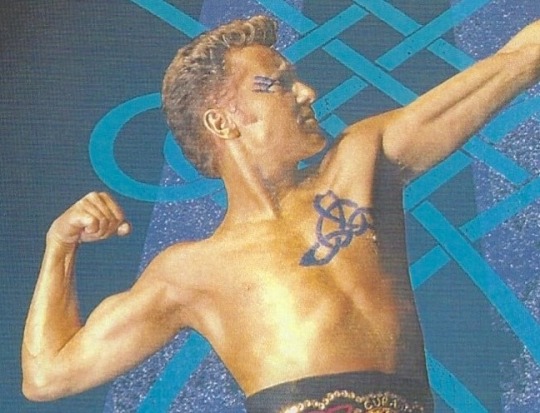
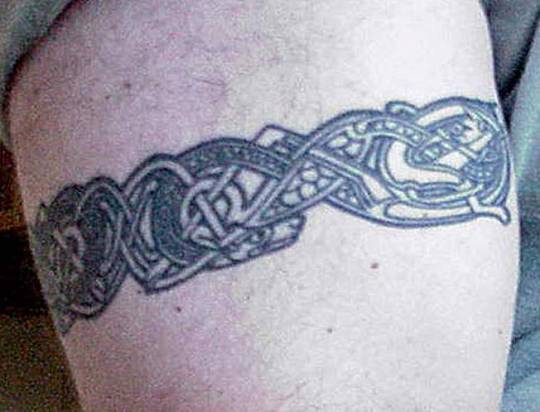
Clockwise from top left: Deirdre and Naoise from the Ulster Cycle by amylouioc, detail from The Marriage of Strongbow and Aoife by Daniel Maclise, a modern Celtic revival tattoo, Michael Flatley in a promotional image for the Irish step dance show 'Lord of the Dance'
This is my second post exploring the historical evidence for our modern belief that the ancient and medieval Insular Celts painted or tattooed themselves with blue pigment. In the first post, I discussed the fact that body paint seems to have been used by residents of Great Britain between approximately 50 BCE to 100 CE. In this post, I will examine the evidence for tattooing.
Once again, I am looking at sources pertaining to any ethnic group who lived in the British Isles, this time from the Roman Era to the early Middle Ages. The relevant text sources range from approximately 200 CE to 900 CE. I am including all British Isles cultures, because a) determining exactly which Insular culture various writers mean by terms like ‘Briton’, ‘Scot’, and ‘Pict’ is sometimes impossible and b) I don’t want to risk excluding any relevant evidence.
Continental Written Sources:
The earliest written source to mention tattoos in the British Isles is Herodian of Antioch’s History of the Roman Empire written circa 208 CE. In it, Herodian says of the Britons, "They tattoo their bodies with colored designs and drawings of all kinds of animals; for this reason they do not wear clothes, which would conceal the decorations on their bodies" (translation from MacQuarrie 1997). Herodian is probably reporting second-hand information given to him by soldiers who fought under Septimius Severus in Britain (MacQuarrie 1997) and shouldn't be considered a true primary source.
Also in the early 3rd century, Gaius Julius Solinus says in Collectanea Rerum Memorabilium 22.12, "regionem [Brittaniae] partim tenent barbari, quibus per artifices plagarum figuras iam inde a pueris variae animalium effigies incorporantur, inscriptisque visceribus hominis incremento pigmenti notae crescunt: nec quicquam mage patientiae loco nationes ferae ducunt, quam ut per memores cicatrices plurimum fuci artus bibant."
Translation: "The area [of Britain] is partly occupied by barbarians on whose bodies, from their childhood upwards, various forms of living creatures are represented by means of cunningly wrought marks: and when the flesh of the person has been deeply branded, then the marks of the pigment get larger as the man grows, and the barbaric nations regard it as the highest pitch of endurance to allow their limbs to drink in as much of the dye as possible through the scars which record this" (from MacQuarrie 1997).
This passage, like Herodian's, is clearly a description of tattooing, not body staining or painting. That said, I have no idea of tattoos actually work like this. I would think this would result in the adult having a faded, indistinct tattoo, but if anyone knows otherwise, please tell me.
The poet Claudian, writing in the early 5th c., is the first to specifically mention the Picts having tattoos (MacQuarrie 1997). In De Bello Gothico he says, "Venit & extremis legio praetenta Britannis,/ Quæ Scoto dat frena truci, ferroque notatas/ Perlegit exanimes Picto moriente figuras."
Translation: "The legion comes to make a trial of the most remote parts of Britain where it subdues the wild Scot and gazes on the iron-wrought figures on the face of the dying Pict" (from MacQuarrie 1997).
Last, and possibly least, of our Mediterranean sources is Isidore of Seville. In the early 7th c. he writes, "the Pictish race, their name derived from their body, which the efficient needle, with minute punctures, rubs in the juices squeezed from native plants so that it may bring these scars to its own fashion [. . .] The Scotti have their name from their own language by reason of [their] painted body, because they are marked by iron needles with dark coloring in the form of a marking of varying shapes." (translation from MacQuarrie 1997)
Isidore is the earliest writer to explicitly link the name 'Pict' to their 'painted' (Latin: pictus) i.e. tattooed bodies. Isidore probably borrowed information for his description from earlier writers like Claudian (MacQuarrie 1997).
In the 8th century, we have a source that definitely isn't Romans recycling old hearsay. In 786, a pair of papal legates visited the Anglo-Saxon kingdoms of Mercia and Northumbria (Story 1995). In their report to Pope Hadrian, the legates condemn pagans who have "superimposed most hideous cicatrices" (i.e gotten tattoos), likening the pagan practice to coloring oneself "with dirty spots". The location of the visit indicates that these are Anglo-Saxon tattoos rather than Celtic, but some scholars have suggested that the Anglo-Saxons might have adopted the practice from the Brittonic Celts (MacQuarrie 1997).
A gloss in the margin of the late 9th c. German manuscript Fulda Aa 2 defines Stingmata [sic] as "put pictures on the bodies as the Irish (Scotti) do." (translation from MacQuarrie 1997).
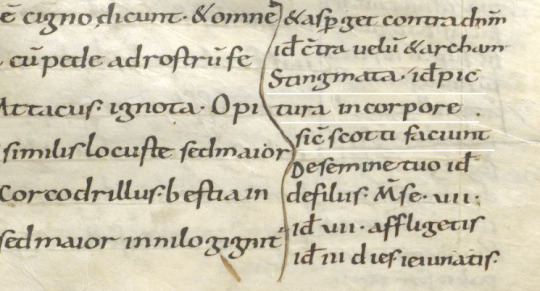
Fulda Aa 2 folio 43r The gloss is on the left underlined in white.
Irish Written Sources:
Irish texts that mention tattoos date to approximately 700-900 CE, although some of them have glosses that may be slightly later, and some of them cannot be precisely dated.
The first text source is a poem known in English as "The Caldron of Poesy," written in the early 8th c. (Breatnach 1981). The poem is purportedly the work of Amairgen, ollamh of the legendary Milesian kings. In the first stanza of the poem, he introduces himself saying, "I being white-kneed, blue-shanked, grey-bearded Amairgen." (translation from Breatnach 1981)
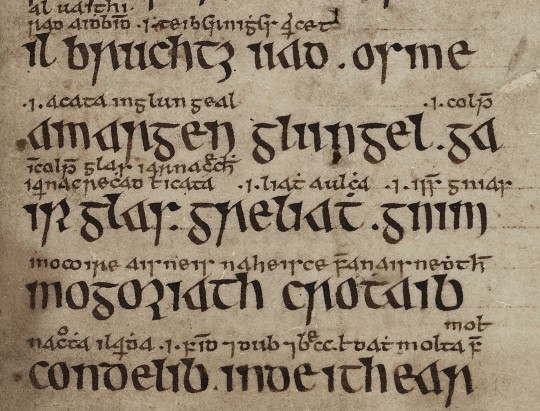
The text of the poem with interline glosses from Trinity College Dublin MS 1337/1
The word garrglas (blue-shanked) has a Middle Irish (c. 900-1200) gloss added by a later scribe, defining garrglas as: "a tattooed shank, or who has the blue tattooed shank" (Breatnach 1981).
Although Amairgen was a mythical figure, the position ollamh was not. An ollamh was the highest rank of poet in medieval Ireland, considered worthy of the same honor-price as a king (Carey 1997, Breatnach 1981). The fact that a man of such esteemed status introduces himself with the descriptor 'blue-shanked' suggests that tattoos were a respectable thing to have in early medieval Ireland.
The leg tattoos are also mentioned c. 900 CE in Cormac’s Glossary. It defines feirenn as "a thong which is about the calf of a man whence ‘a tattooed thong is tattooed about [the] calf’" (translation from MacQuarrie 1997)
The Irish legal text Uraicecht Becc, dated to the 9th or early 10th c., includes the word creccoire on a list of low-status occupations (Szacillo 2012, MacNeill 1924). A gloss defines it as: crechad glass ar na roscaib, a phrase which Szacillo interprets as meaning "making grey-blue sore (tattooing) on the eyes" (2012). This sounds rather strange, but another early Irish text clarifies it.
The Vita sancti Colmani abbatis de Land Elo written around the 8th-9th centuries (Szacillo 2012) contains the following episode:
On another time, St Colmán, looking upon his brother, who was the son of Beugne, saw that the lids of his eyes had been secretly painted with the hyacinth colour, as it was in the custom; and it was a great offence at St Colmán’s. He said to his brother: ‘May your eyes not see the light in your life (any more). And from that hour he was blind, seeing nothing until (his) death. (translation from Szacillo 2012).
The original Latin phrase describing what so offended St Colmán "palpebre oculorum illius latenter iacinto colore" does not contain the verb paint (pingo). It just says his eyelids were hyacinth (blue) colored. This passage together with the gloss from the Uraicecht Becc implies that there was a custom of tattooing people's eyelids blue in early medieval Ireland. A creccoire* was therefore a professional eyelid tattooer or a tattoo artist.
A possible third reference to tattooing the area around the eye is found in a list of Old Irish kennings. The kenning for the letter 'B' translates as 'Beauty of the eyebrow.' This kenning is glossed with the word crecad/creccad (McManus 1988). Crecad could be translated as cauterizing, branding, or tattooing (eDIL). McManus suggests "adornment (by tattooing) of the eyebrow" as a plausible interpretation of how crecad relates to the beauty of the eyebrow (1988). The precise date of this text is not known (McManus 1988), but Old Irish was used c. 600-900 CE, meaning this text is of a similar date to the other Irish references to tattoos.
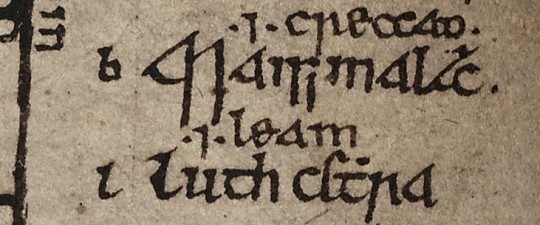
Kenning of the letter 'b' with gloss from TCD MS 1337/1
There is a sharp contrast between the association of tattoos with a venerated figure in 'The Caldron of Poesy', and their association with low-status work and divine punishment in the Uraicecht Becc and the Vita. This indicates that there was a shift in the cultural attitude towards tattoos in Ireland during the 7th-9th centuries. The fact that a Christian saint considered getting tattoos a big enough offense to punish his own brother with blindness suggests that tattooing might have been a pagan practice which gradually got pushed out by the Catholic Church. This timeline is consistent with the 786 CE report of the papal legates condemning the pagan practice of tattooing in Great Britain (MacQuarrie 1997).
There are some mentions of tattooing in Lebor Gabála Érenn, but the information largely appears to be borrowed from Isidore of Seville (MacQuarrie 1997). The fact that the writers of LGE just regurgitated Isidore's meager descriptions of Pictish and Scottish (ie Irish) tattooing without adding any details, such as the designs used or which parts of the body were tattooed, makes me think that Insular tattooing practices had passed out of living memory by the time the book was written in the 11th century.
*There is some etymological controversy over this term. Some have suggested that the Old Irish word for eyelid-tattooer should actually be crechaire. more info Even if this hypothesis is correct, and the scribe who wrote the gloss on creccoire mistook it for crechaire, this doesn't contradict my argument. The scribe clearly believed that eyelid-tattooer belonged on a list of low-status occupations.
Discussion:
Like Julius Cesar in the last post, Herodian of Antioch c. 208 CE makes some dubious claims of Celtic barbarism, stating that the Britons were: "Strangers to clothing, the Britons wear ornaments of iron at their waists and throats; considering iron a symbol of wealth, they value this metal as other barbarians value gold" (translation from MacQuarrie 1997). If the Britons wore nothing but iron jewelry, then why did they have brass torcs and 5,000 objects that look like they're meant to attach to fabric, Herodian?
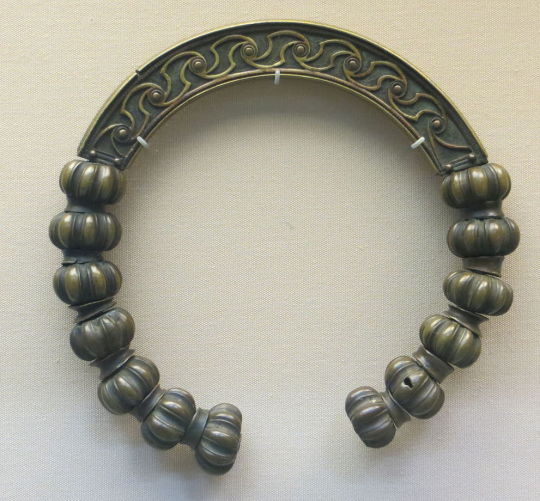
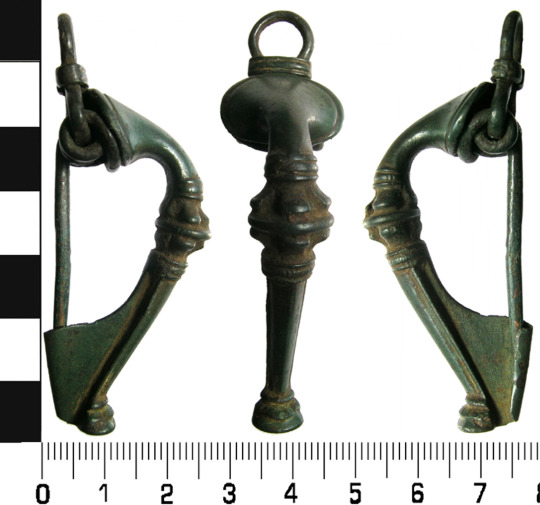
Brass torc from Lochar Moss, Scotland c. 50-200 CE. Romano-British trumpet brooch from Cumbria c. 75-175 CE. image from the Portable Antiquities Scheme.
Trumpet brooches are a Roman Era artifact invented in Britain, that were probably pinned to people's clothing. more info
Although Herodian and Solinus both make dubious claims, there are enough differences between them to indicate that they had 2 separate sources of information, and one was not just parroting the other. This combined with the fact that we have more-reliable sources from later centuries confirming the existence of tattoos in the British Isles makes it probable that there was at least a grain of truth to their claims of tattooing.
There is a common belief that the name Pict originated from the Latin pictus (painted), because the Picts had 'painted' or tattooed bodies. The Romans first used the name Pict to refer to inhabitants of Britain in 297 CE (Ware 2021), but the first mention of Pictish tattoos came in 402 CE (Carr 2005), and the first explicit statement that the name Pict was derived from the Picts' tattooed bodies came from Isidore of Seville c. 600 CE (MacQuarrie 1997). Unless someone can find an earlier source for this alleged etymology than Isidore, I am extremely skeptical of it.
Summary of the written evidence:
Some time between c. 79 CE (Pliny the Elder) and c. 208 CE (Herodian of Antioch) the practice of body art in Great Britain changed from staining or painting the skin to tattooing. Third century Celtic Briton tattoo designs depicted animals. Pictish tattoos are first mentioned in the 5th century.
The earliest mention of Irish tattoos comes from Isidore of Seville in the early 6th c., but since it seems to have been a pre-Christian practice, it likely started earlier. Irish tattoos of the 8-9th centuries were placed on the area around the eye and on the legs. They were a bluish color. The 8th c. Anglo-Saxons also had tattoos.
Tattooing in Ireland probably ended by the early 10th c., possibly because of Christian condemnation. Exactly when tattooing ended in Great Britain is unclear, but in the 12th c., William of Malmesbury describes it as a thing of the past (MacQuarrie 1997). None of these sources give much detail as to what the tattoos looked like.
The Archaeology of Insular Ink:
In spite of the fact that tattooing was a longer-lasting, more wide-spread practice in the British Isles than body painting, there is less archaeological evidence for it. This may be because the common tools used for tattooing, needles or blades for puncturing the skin, pigments to make the ink, and dishes to hold the ink, all had other common uses in the Middle Ages that could make an archaeologist overlook their use in tattooing. The same needle that was used to sew a tunic could also have been used to tattoo a leg (Carr 2005). A group of small, toothed bronze plates from a Romano-British site at Chalton, Hampshire might have been tattoo chisels (Carr 2005) or they might have been used to make stitching holes in leather (Cunliffe 1977).
Although the pigment used to make tattoos may be difficult to identify at archaeological sites, other lines of evidence might give us an idea of what it was. Although the written sources tell us that Irish tattoos were blue, the popular modern belief that woad was the source of the tattoo pigment is, in my opinion, extremely unlikely for a couple of reasons:
1) Blue pigment from woad doesn't seem to work as tattoo ink. The modern tattoo artists who have tried to use it have found that it burns out of the person's skin, leaving a scar with no trace of blue in it (Lambert 2004).
2) None of the historical sources actually mention tattooing with woad. Julius Cesar and Pliny the Elder mention something that might have been woad, but they were talking about body paint, not tattoos. (see previous post) Isidore of Seville claimed that the Picts were tattooing themselves with "juices squeezed from native plants", but even assuming that Isidore is a reliable source, you can't get blue from woad by just squeezing the juice out of it. In order to get blue out of woad, you have to first steep the leaves, then discard the leaves and add a base like ammonia to the vat (Carr 2005). The resulting dye vat is not something any knowledgeable person would describe as plant juice, so either Isidore had no idea what he was talking about, or he is talking about something other than blue pigment from woad.
In my opinion, the most likely pigment for early Irish and British tattoos is charcoal. Early tattoos found on mummies from Europe and Siberia all contain charcoal and no other colored pigment. These tattoos range in date from c. 3300 BCE (Ötzi the Iceman) to c. 300 CE (Oglakhty grave 4) (Samadelli et al 2015, Pankova 2013).
Despite the fact that charcoal is black, it tends to look blueish when used in tattoos (Pankova 2013). Even modern black ink tattoos that use carbon black pigment (which is effectively a purer form of charcoal) tend to look increasingly blue as they age.
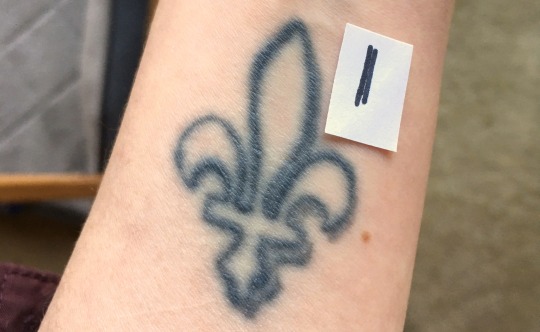
A 17-year-old tattoo in carbon black ink photographed with a swatch of black Sharpie on white printer paper.
The fact that charcoal-based tattoo inks continue to be used today, more than 5,000 years after the first charcoal tattoo was given, shows that charcoal is an effective, relatively safe tattoo pigment, unlike woad. Additionally, charcoal can be easily produced with wood fires, meaning it would have been a readily available material for tattoo artists in the early medieval British Isles. We would need more direct evidence, like a tattooed body from the British Isles, to confirm its use though.
As of June 2024, there have been at least 279 bog bodies* found in the British Isles (Ó Floinn 1995, Turner 1995, Cowie, Picken, Wallace 2011, Giles 2020, BBC 2024), a handful of which have made it into modern museum collections. Unfortunately, tattoos have not been found on any of them. (We don't have a full scientific analysis for the 2023 Bellaghy find yet though.)
*This number includes some finds from fens. It does not include the Cladh Hallan composite mummies.
Tattoos in period art?
It has been suggested that the man fight a beast on Book of Kells f. 130r may be naked and covered in tattoos (MacQuarrie 1997). However, Dress in Ireland author Mairead Dunlevy interprets this illustration as a man wearing a jacket and trews (Dunlevy 1989). Looking at some of the other figures in the Book of Kells, I agree with Dunlevy. F. 97v shows the same long, fitted sleeves and round neckline. F. 292r has long, fitted leg coverings, presumably trews, and also long sleeves. The interlace and dot motifs on f. 130r's legs may be embroidery. Embroidered garments were a status symbol in early medieval Ireland (Dunlevy 1989).

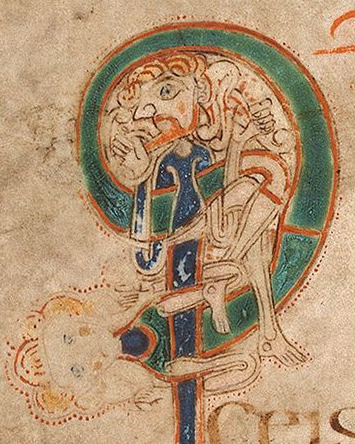
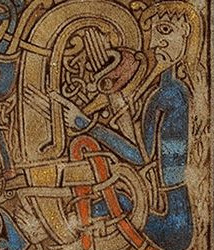
Left to right: Book of Kells folios 130r, 97v, 292r
A couple of sculptures in County Fermanagh might sport depictions of Irish tattoos. The first, known as the Bishop stone, is in the Killadeas cemetery. It features a carved head with 2 marks on the left side of the face, a double line beside the mouth and a single line below the eye. These lines may represent tattoos.
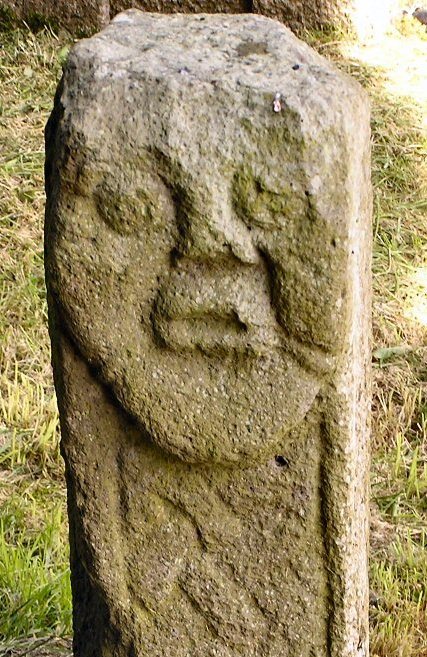

The second sculpture is the Janus figure on Boa Island. (So named because it has 2 faces; it's not Roman.) It has marks under the right eye and extending from the corner of the left eye that may be tattoos.
I cannot find a definitive date for the Bishop stone head, but it bears a strong resemblance to the nearby White Island church figures. The White Island figures are stylistically dated to the 9th-10th centuries and may come from a church that was destroyed by Vikings in 837 CE (Halpin and Newman 2006, Lowry-Corry 1959). The Janus figure is believed to be Iron Age or early medieval (Halpin and Newman 2006).
Conclusions:
Despite the fact that tattooing as a custom in the British Isles lasted for more than 500 years and was practiced by at least 3 different cultures, written sources remain our only solid evidence for it. With only a dozen sources, some of which probably copied each other, to cover this time span, there are huge gaps in our knowledge. The 4th century Picts may not have had the same tattoo designs, placements or reasons for getting tattooed as the 8th c. Irish or Anglo-Saxons. These sources only give us fragments of information on who got tattooed, where the tattoos were placed, what they looked like, how the tattoos were done, and why people got tattooed. Further complicating our limited information is the fact that most of the text sources come from foreigners and/or people who were prejudiced against tattooing, which calls their accuracy into question.
'The Cauldron of Posey' is one source that provides some detail while not showing prejudice against tattoos. The author of the poem was probably Christian, but the poem appears to have been written at a time when Pagan practices were still tolerated in Ireland. I have a complete translation of the poem along with a longer discussion of religious elements here.
Leave me a tip?
Bibliography:
BBC (2024). Bellaghy bog body: Human remains are 2,000 years old https://www.bbc.com/news/uk-northern-ireland-68092307
Breatnach, L. (1981). The Cauldron of Poesy. Ériu, 32(1981), 45-93. https://www.jstor.org/stable/30007454
Carey, J. (1997). The Three Things Required of a Poet. Ériu, 48(1997), 41-58. https://www.jstor.org/stable/30007956
Carr, Gillian. (2005). Woad, Tattooing and Identity in Later Iron Age and Early Roman Britain. Oxford Journal of Archaeology 24(3), 273–292. https://doi.org/10.1111/j.1468-0092.2005.00236.x
Cowie, T., Pickin, J. and Wallace, T. (2011). Bog bodies from Scotland: old finds, new records. Journal of Wetland Archaeology 10(1): 1–45.
Cunliffe, B. (1977) The Romano-British Village at Chalton, Hants. Proceedings of the Hampshire Field Club and Archaeological Society, 33(1977), 45-67.
Dunlevy, Mairead (1989). Dress in Ireland. B. T. Batsford LTD, London.
eDIL s.v. crechad https://dil.ie/12794
Giles, Melanie. (2020). Bog Bodies Face to face with the past. Manchester University Press, Manchester. https://library.oapen.org/viewer/web/viewer.html?file=/bitstream/handle/20.500.12657/46717/9781526150196_fullhl.pdf?sequence=1&isAllowed=y
Halpin, A., Newman, C. (2006). Ireland: An Oxford Archaeological Guide to Sites from Earliest Times to AD 1600. Oxford University Press, Oxford. https://archive.org/details/irelandoxfordarc0000halp/page/n3/mode/2up
Hoecherl, M. (2016). Controlling Colours: Function and Meaning of Colour in the British Iron Age. Archaeopress Publishing LTD, Oxford. https://www.google.com/books/edition/Controlling_Colours/WRteEAAAQBAJ?hl=en&gbpv=0
Lambert, S. K. (2004). The Problem of the Woad. Dunsgathan.net. https://dunsgathan.net/essays/woad.htm
Lowry-Corry, D. (1959). A Newly Discovered Statue at the Church on White Island, County Fermanagh. Ulster Journal of Archaeology, 22(1959), 59-66. https://www.jstor.org/stable/20567530
MacQuarrie, Charles. (1997). Insular Celtic tattooing: History, myth and metaphor. Etudes Celtiques, 33, 159-189. https://doi.org/10.3406/ecelt.1997.2117
McManus, D. (1988). Irish Letter-Names and Their Kennings. Ériu, 39(1988), 127-168. https://www.jstor.org/stable/30024135
Ó Floinn, R. (1995). Recent research into Irish bog bodies. In R. C. Turner and R. G. Scaife (eds) Bog Bodies: New Discoveries and New Perspectives (p. 137–45). British Museum Press, London. ISBN: 9780714123059
Pankova, S. (2013). One More Culture with Ancient Tattoo Tradition in Southern Siberia: Tattoos on a Mummy from the Oglakhty Burial Ground, 3rd-4th century AD. Zurich Studies in Archaeology, 9(2013), 75-86.
Samadelli, M., Melisc, M., Miccolic, M., Vigld, E.E., Zinka, A.R. (2015). Complete mapping of the tattoos of the 5300-year-old Tyrolean Iceman. Journal of Cultural Heritage, 16(2015), 753–758.
Story, Joanna (1995). Charlemagne and Northumbria : the in
fluence of Francia on Northumbrian politics in the later eighth and early ninth centuries. [Doctoral Thesis]. Durham University. http://etheses.dur.ac.uk/1460/
Szacillo, J. (2012). Irish hagiography and its dating: a study of the O'Donohue group of Irish saints' lives. [Doctoral Thesis]. Queen's University Belfast.
Turner, R.C. (1995). Resent Research into British Bog Bodies. In R. C. Turner and R. G. Scaife (eds) Bog Bodies: New Discoveries and New Perspectives (p. 221–34). British Museum Press, London. ISBN: 9780714123059
Ware, C. (2021). A Literary Commentary on Panegyrici Latini VI(7) An Oration Delivered Before the Emperor Constantine in Trier, ca. AD 310. Cambridge University Press, Cambridge. https://www.google.com/books/edition/A_Literary_Commentary_on_Panegyrici_Lati/oEwMEAAAQBAJ?hl=en&gbpv=0
#early medieval#roman era#pict#tattoos#ancient celts#apologies to people who wanted a shorter post#archaeology#art#anecdotes and observations#statutes and laws#irish history#gaelic ireland#medieval ireland#anglo saxon#insular celts#romano british
93 notes
·
View notes
Text
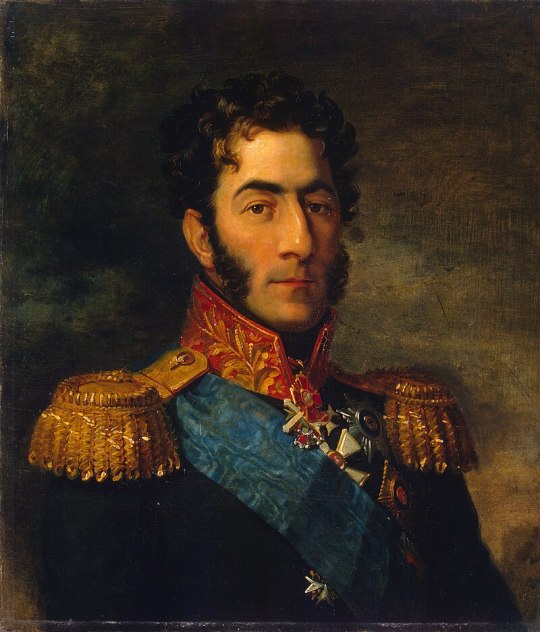
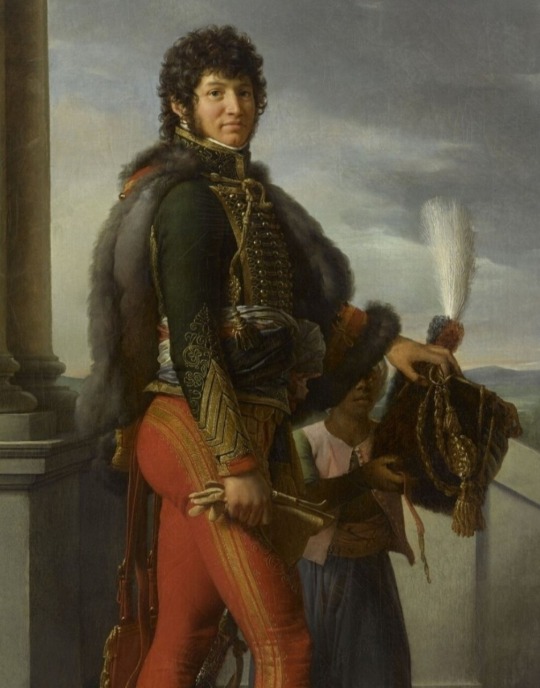
Pyotr Bagration
a. “From what I’ve read, he was a shy sweetheart outside of war, and an absolutely badass during battle. Like- it was partially that shyness that got him caught up in his less than favorable marriage. Also, have you seen his portrait by George Dawes?! It makes me swoon at the sight of it.”
b. “The best, the sexiest and certainly the greatest NOSE in the Russian army and perhaps all armies of that period. Noseys of Napoleonic era, beware! Believed to be a target of Grand Duchess Catherine Pavlovna's affections, a soldier's soldier celebrated for his courage and spirit, respected even by Napoleon and widely beloved… with the noted exceptions of his own wife and one Barclay de Tolly.”
c. “His sideburns and his nose”
Joachim Murat:
a. “Serving cunt and cake (seriously, look up his Hussar portrait)”
b. “see: any portrait of him. dat ass in dat hussar's uniform.”
c. “He is the First Horseman of France, he is a Grand Admiral who can’t fuckin sail a ship. He allegedly had “For France and For The Ladies” on his sword. He was often called “Beau Sabreur” which some will tell you means Dashing Swordsman. He looked after his appearance, getting a servant to help curl those locks around his fingers and designing so many uniforms - he had the fashion game! And when he died he asked his firing squad to aim at the heart and spare the face, because he knew he was a sexyman to the end.”
89 notes
·
View notes
Text
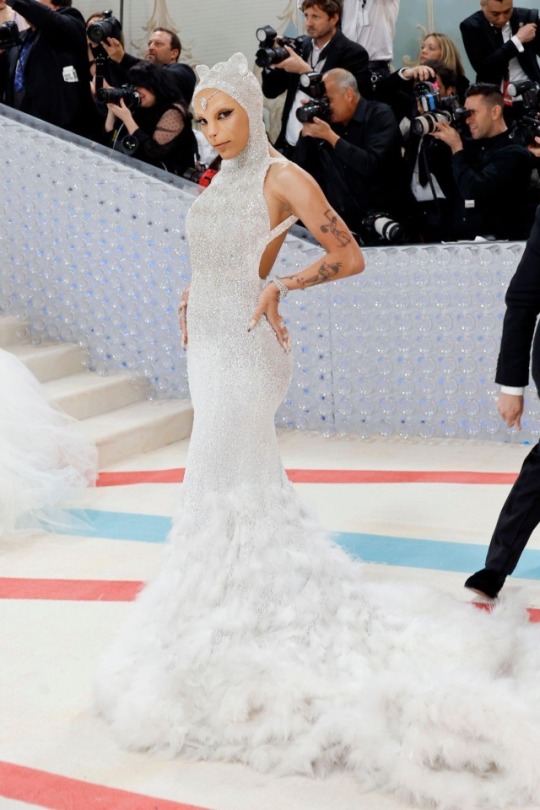
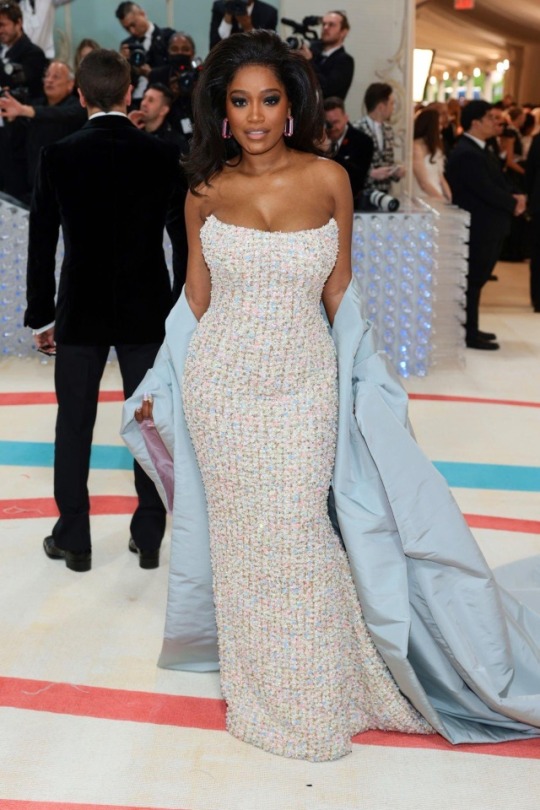
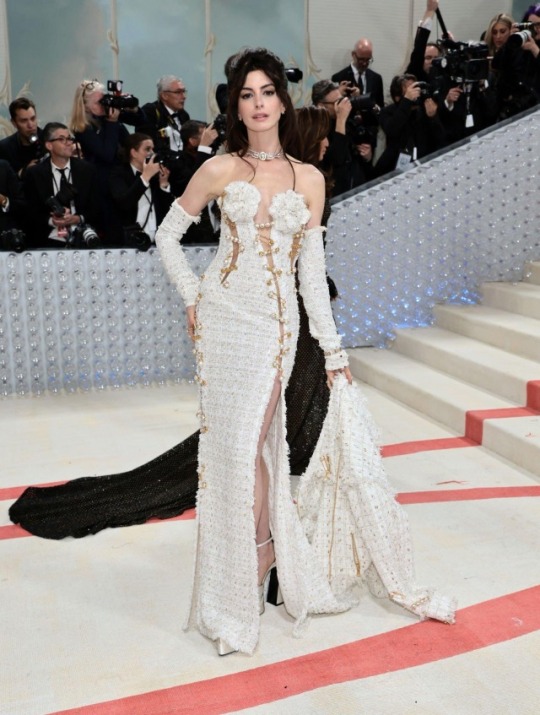






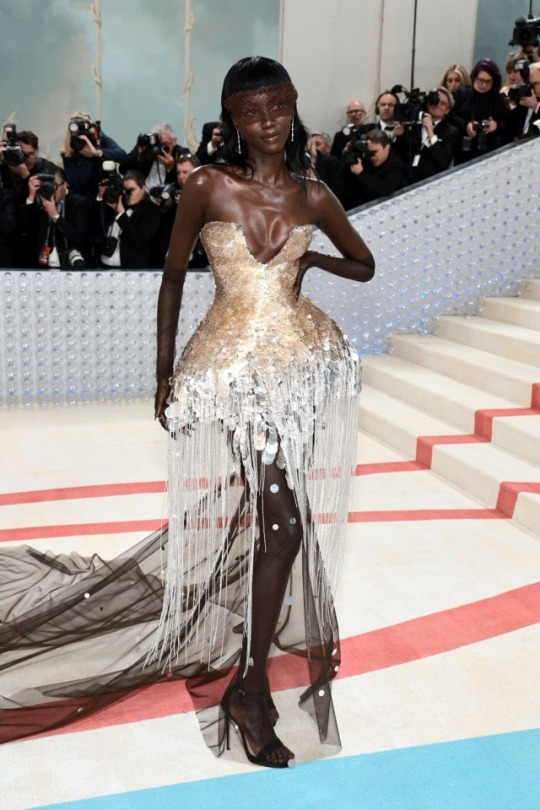
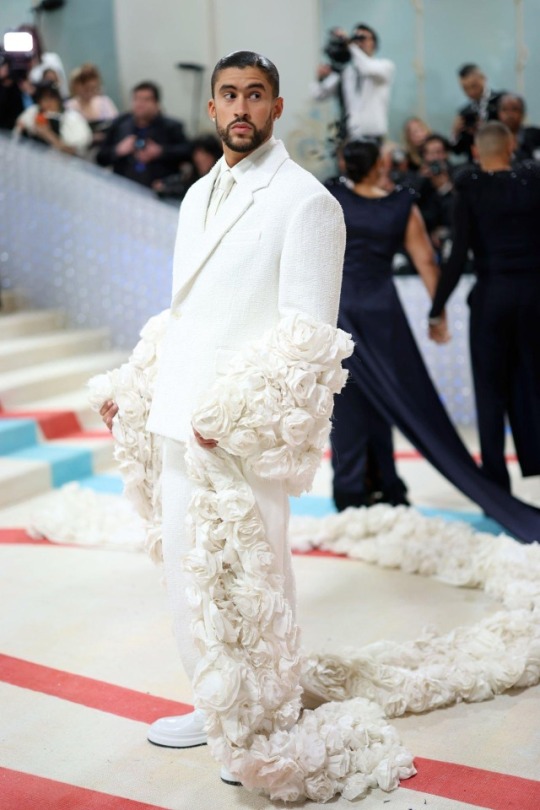
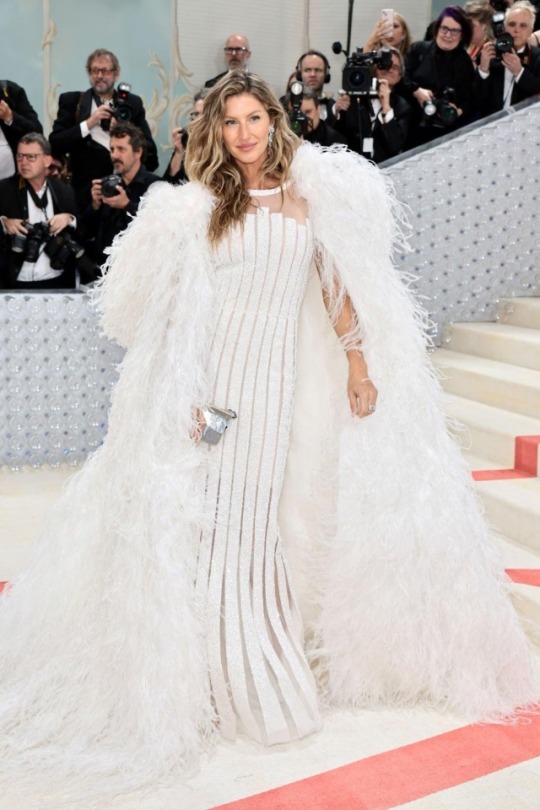
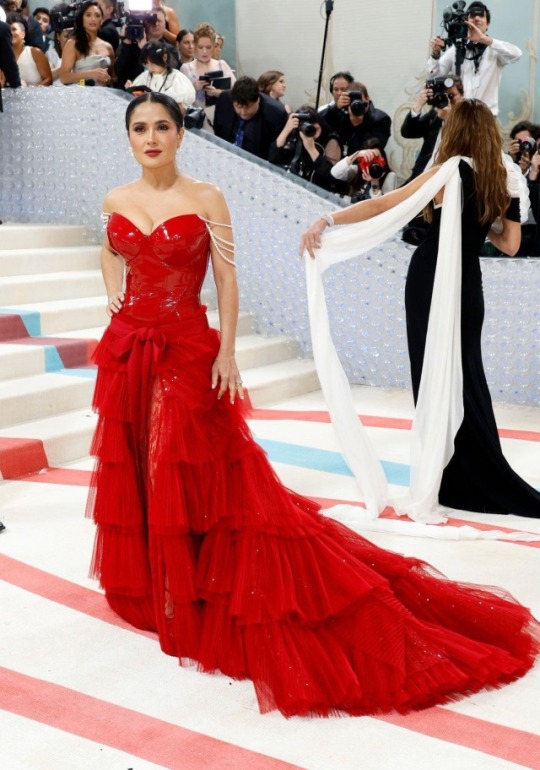

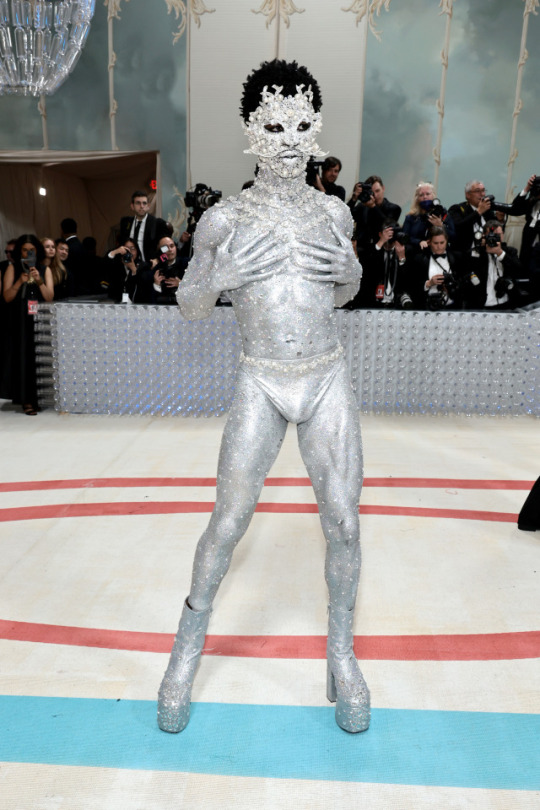
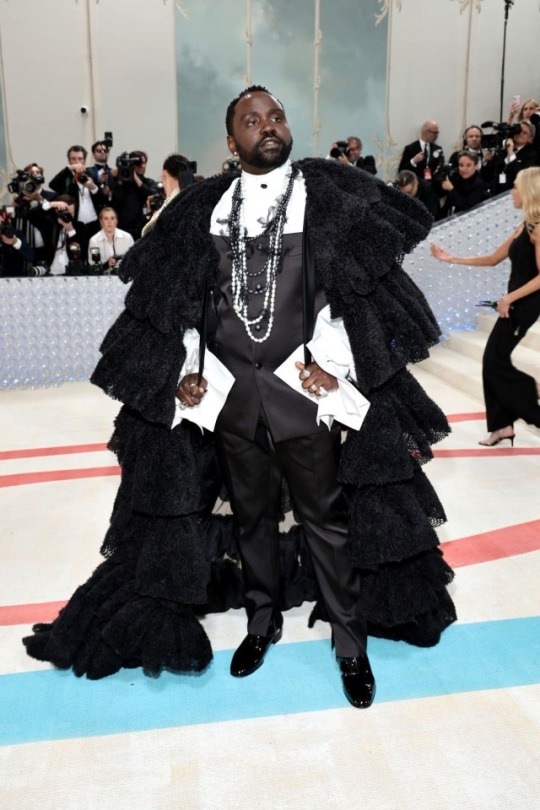
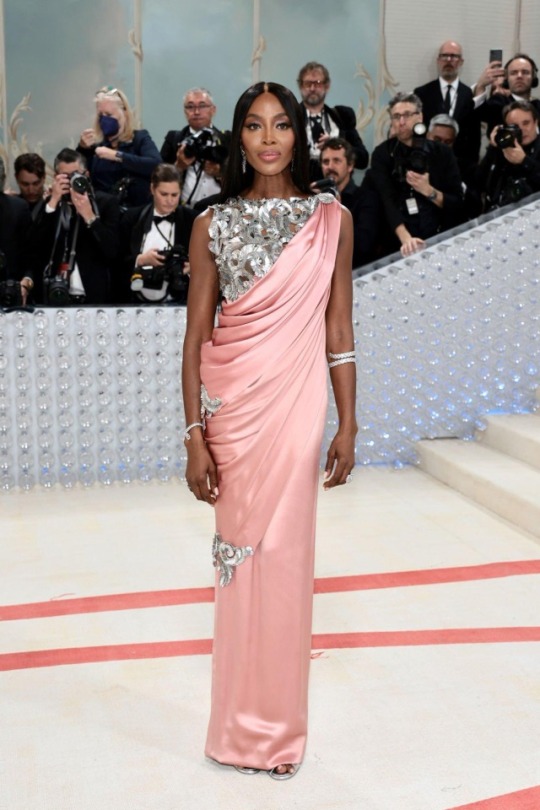
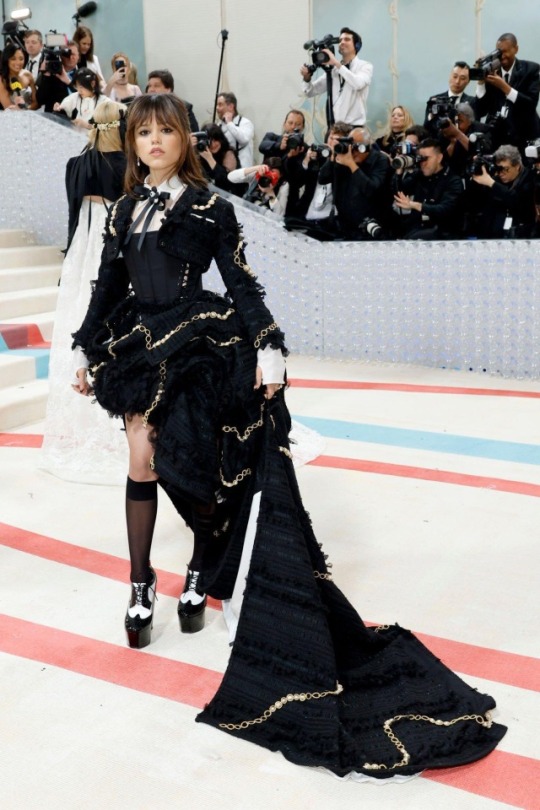
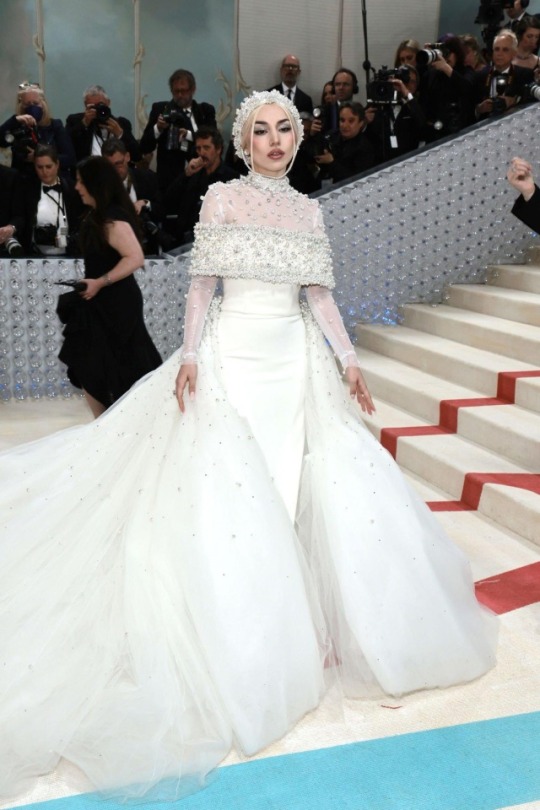
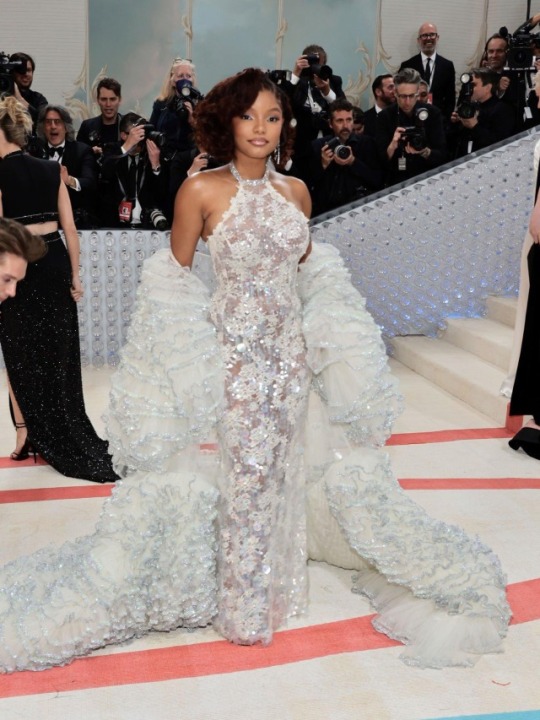


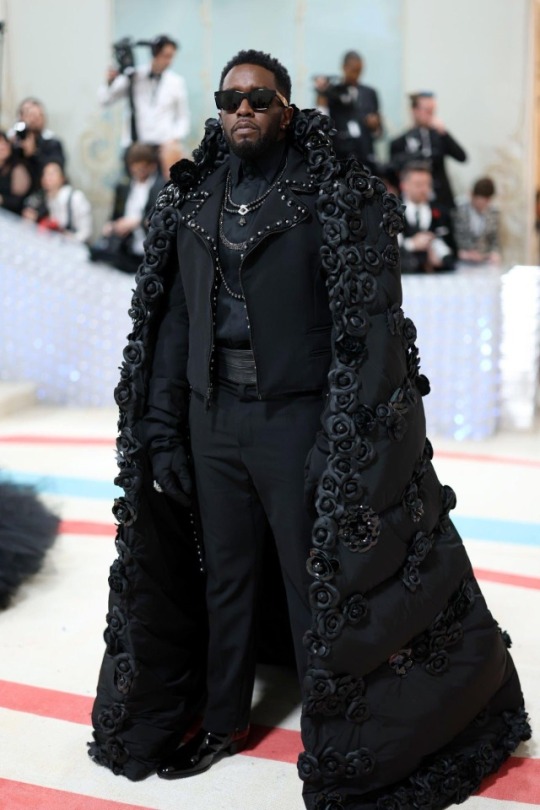
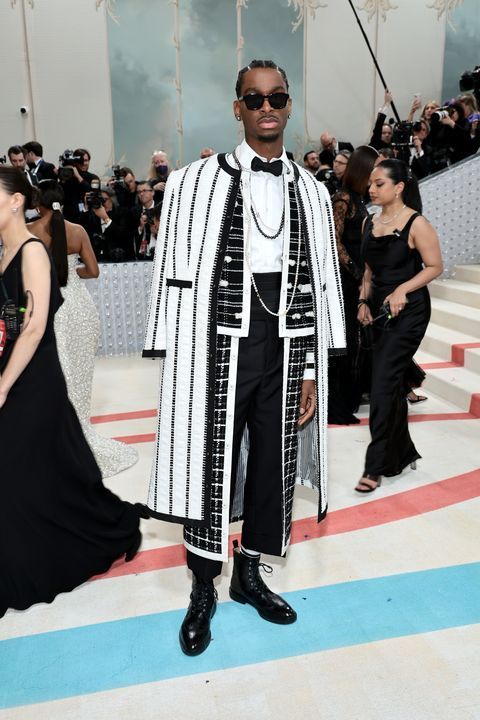
In no particular order, my top looks from the 2023 Met Gala "Karl Lagerfeld: A Line in Beauty"
My thoughts are below, but I'll be honest, I didn't really do any background research this year because there wasn't much to be done. These are really just my opinions on whether or not I liked the look.
Ironically, I felt this was a very mediocre year, which led to me having a lot more favorites than usual because they were kind of all on the same level. In previous years I would have separated this into multiple posts, but I don't really see the point.
Doja Cat: I wanted someone to dress up as Choupette the cat and she delivered, and managed to do so in a way that was still fitting for the event
Keke Palmer: She looked amazing, and really captured the Chanel look with the bombshell hair and the extremely bedazzled tweed. I honestly don't want to think about how much that dress weighed
Anne Hathaway: Besides that fact that I love everything Anne Hathaway has ever done, this dress was the perfect combination of honoring Lagerfeld's style while also incorporating it into the style of the brand she was representing (Versace). It had tweed and pearls, but also sex appeal and safety pins
Cardi B: First, I just want to appreciate her ongoing commitment to high fashion and the fact that she had three (3) completely separate looks. This particular Miss Sohee look was my favorite because she's living out my glinda barbie mermaid fairy princess dreams
Harvey Guillen: This was one of the first looks I saw of the night, and still one of my favorites. It has all the Lagerfeld style essentials, but still manages to look unique. Plus, creative menswear always gets extra points because the bar is painfully low, though this year was a surprisingly pleasant exception.
Jennifer Lopez: It's not the most creative look, but it's right up my alley and honestly, do we expect anything groundbreaking from JLo? She's always going to show up in something pretty that's decently on theme enough for me to just focus on whether or not I like it. And this immediately makes me think of classic Chanel.
Penelope Cruz: She was a co-host, it's vintage Chanel couture from the 80's, and she's one of the people I most heavily associate with Lagerfeld and Chanel. A win all around.
Russell Westbrook: I really want to give Russell Westbrook credit for always showing up to the Met Gala and really going for it. I love all the details: the pearl necklace, the tweed blazer with floral clasps, the bows on the shoes
Chloe Fineman: Another first look that turned out to be a favorite. This again had all the necessary design elements without feeling like a cheap knockoff. Also major points for the bedazzled cat bag.
Anok Yai: I don't know and I don't care how this relates to theme, she looked like a goddess
Bad Bunny: Another man not only doing something interesting but incorporating the theme? Genuinely shocking. Obviously I loved the OTT floral cape, but I really loved the ode to c. 2005 Chanel with the backless suit and backwards necklace.
Gisele: She wore the same dress from an iconic 2007 editorial, proving not only that she still has it, but that she's always had it. A true supermodel.
Salma Hayek: She looked hot, I don't know what else you want me to say about it. Also it had color, which nothing else did. My eyes were starving for color.
Glenn Close: For starters, she needed an entire team to carry her train so props for that. She brought the drama, the glitz, and the "age is just a number so shut the hell up" glamor.
Lil Nas X: This was, for lack of a better phrase, a cheeks out, bedazzled, balls to the wall look. The Choupette inspiration is more obvious when he was inside with the fur (ish?) coat on, but I honestly didn't care. I needed a moment and he delivered. Though I do wonder (1) how long it took to bedazzle him and (2) will he every fully be de-glittered.
Brian Tyree Henry: I don't know if it's the pose or the cape, but it's giving me dramatic shakespeare vibes and I appreciate it.
Naomi Campbell: The only issue I have with this look is that they called 2010 Chanel Couture "vintage" and I can't accept that. Beyond that, I mean, it's Naomi Campbell in Chanel Couture. I was also dying for any semblance of color at this point and somehow this dress was among the most colorful
Jenna Ortega: The perfect combination of chanel tweed cropped blazer/mini skirt and the Wednesday Addams aesthetic. Which was interesting because I thought she was trying to move away from that but I don't care it was a successful look
Ava Max: Chanel was known for the haute couture bride, and this not only really captures that, it was one of the most and quite honestly only majorly dramatic looks of the night
Halle Bailey: She looked like a mermaid and I love that for her
Ashley Graham: I would have loved this look regardless, but after seeing the dress it was modeled after, I also think it was one of the best tributes of the night
Tems: Has she ever looked bad on a red carpet? Her headpieces are just getting bigger and more elaborate and I see nothing wrong with that.
Diddy: I love the drama + the floral cape, though I am left wondering how he didn't faint under all of that. Also, you can roast me all you want for captioning his post with Sean Combs but that's what was given to the AP so it's what I went with.
Shai Gilgeous Alexander: A final man who followed the theme and wore something interesting, arguably more interesting than some of the women. I actually think I like this look better without the coat over it.
#met gala#met gala 2023#red carpet#fashion faves#fashion favorites#met gala favorites#to quote the princess diaries#your majesty paolo is exhausted
409 notes
·
View notes
Text
Met Gala 2023: My Top 10 Women’s Looks
Here we go, this is my 10 women’s looks from the Met Gala 2023. Just to remind everyone that my opinions are mine alone, so feel free to agree or disagree with me as much as you like. However I will not tolerate any hate personally aimed at me if you disagree with me to the point where you want to start an argument.
So let’s keep it respectful, clean (language wise) and more importantly let’s have some fun with this. Like I said, if you’re looking for an argument, then you’re following the wrong fashion blog.
1. Kim Kardashian wearing Schiaparelli.
This was the first look I saw this morning when I switched my phone on and I was blown away by it. I honestly didn’t know what to expect from Kim after her look from last year that got a lot of people talking. So I was pleasantly surprised to see her in an original design that shows off her body in all the right places and I love the draped pearls across her breasts (which are actually covered by a nude bra). Overall it was another Met Gala and another show stopping moment from Kim Kardashian.
2. Doja Cat wearing Oscar De La Renta
In comparison to Jared Leto, Doja Cat understood the theme and took it to a whole other level that was both unexpected but not at the same time. I loved the use of prosthetics that complimented her simple yet stunning crystallised gown. Plus who doesn’t love a gown with a hood that has cat ears coming out the top that makes you look like a fashionista rather than someone attending a Halloween party?
3. Gigi Hadid wearing Givenchy
I’m a sucker for a black gown that comes not just with a corset but a lot of tulle draped perfectly in all the right places as well. Gigi just looked stunning in this and considering a lot of attendee’s were also wearing either black or white, her Givenchy gown stood out when I was scrolling endlessly through all the looks earlier today. Simple, yet perfect sums up her look that I couldn't not add to my top 10 favourites.
4. Cardi B wearing Chenpeng Studio
I just loved the edgy yet alternative bridal look that also incorporated a masculine energy through the shirt and tie design blended with a corset that still made the overall gown look and feel feminine as well as beautiful. I’m not a fan of Cardi B as a rapper but like Kim Kardashian her Met Gala looks have never disappointed and I think this look was one of her best yet.
5. Devon Aoki wearing Jeremy Scott
Even though it’s yet another black & white gown, I just love the cartoon styled wings on the bust line of the corset. To me it made this gown stand out in the sea on monochrome that plagued the Met Gala 2023. Without that unique design, this gown would’ve gone unnoticed and it would’ve easily become another gown that was worn to the wrong event.
6. Florence Pugh in Valentino
Florence has been killing it with her red carpet looks in the last 18 months or so, so it was no surprise that she would turn heads at the Met Gala. Whilst I'm not a fan of Valentino since Pierpaolo Piccioli took over as creative designer when Maria Grazi Chiuri left for Dior back in 2016, I can’t help but love this look. A simple white gown paired with a huge feather crown just looked stunning on Florence and it’s another reason why we love seeing show stopping numbers like this one.
7. Glenn Close wearing Erdem Moralıoğlu
Similar to Florence Pugh’s look, Glenn Close just looked phenomenal in her Erdem Moralıoğlu design. Once again it was simple yet stunning and I loved the colour on her. It suited her to a tee and what better way to pair a simple gown that with a huge pale blue cape and the sparkliest jewellery of the night. It just goes to show that anyone of any age and can look amazing when dressed perfectly for the Met Gala.
8. Liu Wen wearing Tory Burch
I just love how simple the gown is yet at the bottom it’s filled with white flowers that make the Tory Burch gown stand out amongst hundreds of Met Gala looks. The whole look screams red carpet but it’s also the ideal gown for a bride who doesn’t want to wear white to her wedding. Liu Wen just looked stunning in it and it’s why her look has made it into my top 10.
9. Salma Hayek wearing Gucci
I just love that it wasn’t black or white and the sharpness of the red looked phenomenal on Salma both in the PVC corset and the long tiered skirt. Plus the subtle draping of the pearls as straps just topped the look off altogether. Once again I loved everything about it and I can’t fault it at all. It was perfect.
10. Tems wearing Robert Wun
This gown was a standout for all the right reasons. Tems looked absolutely gorgeous from head to toe and I love how all the feathers are perfectly placed on both the gown, the gloves and the headpiece from stepping over that line from haute couture into a costume. The shape of the gown also compliments her body to her a tee and I couldn’t think of anything better that Tem’s could’ve worn to the Met Gala.
So this concludes my top 10 looks from the Met Gala 2023. I have to say picking this list was hard because there were so many another amazing designs worn last night, however these 10 stand out to me the most. Feel free to leave your opinion in the comments about which was your standout garment from last night, perhaps it’s on my list and perhaps it’s not.
I look forward to hearing what you all have to say about this year’s fashion.
358 notes
·
View notes
Text
Creative Path Discovery with Design in Fashion and Inside Spaces in Gandhinagar

People in this world are now more conscious of taking a good look at things. They love making their clothes and making their spaces look great. If you are going to design clothes or rooms and buildings, then a great start would be studying Design in Gandhinagar. The schools to study that special program are named Bachelor of Design (B.Des) for learning about fashion (making clothes) and interior (inside spaces) design. Talk about how Gandhinagar is special in learning to do design.
Learn about Making Clothes (Fashion Design)
Making clothes is not just about sewing. It's all about creativity in making new styles people love wearing. Studying for four years in the course of fashion design will teach you how to come up with ideas for new clothes, how to make them, and even how to sell them. B Des in fashion designing in Gandhinagar will teach you all this in a fun way. Practice a lot, learn by yourself and from teachers who know much about fashion.
The Knowledge of Designing Inside Spaces (Interior Designing)
Interior designing is the art of designing visually attractive and practically useful rooms and buildings. When you study this for four years, you learn about the right picking of things like furniture colors and how to put them in a room. Gandhinagar has many B Des in interior designing colleges where you can work on real projects. It would also mean that you would get a chance to execute them and apply them in life, and you would learn a lot from them.
Gandhinagar - A Good Place for Design Students
Gandhinagar is considered pretty famous to be a very good place for design students. The interior design course in Gandhinagar will have everything a student would need to become a good designer. They also help students to meet people who are working in design, which would help them find jobs in the future.
Master Designing At Swarrnim University
In the heart of Gandhinagar lies Swarrnim Startup & Innovation University, a unique educational haven for those intrigued by the world of design. Swarrnim University stands out as a vibrant community of creators, innovators, and thinkers, making it a quintessential place for students dreaming of a career in fashion and interior design. What makes Swarrnim University exceptional is its commitment to blending creativity with entrepreneurship, preparing students not just to become designers but innovators who can lead the future of design industries.
Conclusion
It will be exciting to start on this road of design—be it in making clothes or creating new spaces. Gandhinagar is the place where one can study design as it helps in making one a great designer. It's a city that loves design and helps its students grow. Hence, if you have been dreaming about being a designer, Gandhinagar waits for you.
Now, if one has been thinking about being a designer, at last it is time to think a bit seriously about the exploration. Look at schools in Gandhinagar, talk to people who study and work in design, and start your adventure. Your best tools are ideas and creativity. Let Gandhinagar be the place where your design dreams start coming true.
#swarrnim university#ssiu gandhiangar#fashion designing in gandhinagar#B Des in fashion designing#B Des in interior designing#Interior design course in Gandhinagar
0 notes
Text
Explore Your Creative Potential at DC School of Architecture and Design, Kerala
Are you passionate about design and architecture? Do you dream of shaping the spaces and products that define our world? At DC School of Architecture and Design in Kerala, we offer a range of undergraduate programs that cater to your creative ambitions and prepare you for a fulfilling career in the design and architecture industries. Situated in the picturesque locales of Vagamon and Trivandrum, our campuses provide the perfect blend of academic excellence and serene surroundings.
Bachelor of Design (B.Des) Programs:
Our Bachelor of Design (B.Des) programs are crafted to nurture creativity, innovation, and technical proficiency. Whether you are interested in product design, graphic design, fashion design, or interior design, our comprehensive curriculum is designed to equip you with the skills and knowledge required to excel in your chosen field. We emphasize a hands-on approach, encouraging students to work on real-world projects, collaborate with industry professionals, and explore new design methodologies.
B.Des in Product Design: This program focuses on developing innovative and functional products that enhance user experience. You will learn about materials, manufacturing processes, ergonomics, and sustainable design practices, preparing you to create products that are not only aesthetically pleasing but also practical and environmentally friendly.
B.Des in Graphic Design: Dive into the world of visual communication with our graphic design program. From typography and illustration to digital media and branding, you will master the art of conveying messages effectively through visual elements. This course is ideal for those who aspire to work in advertising, media, and corporate communication.
B.Des in Fashion Design: If fashion is your passion, this program will help you turn your creativity into a thriving career. Learn about fashion illustration, garment construction, textile science, and fashion marketing. Our curriculum is designed to keep you abreast of the latest trends and technologies in the fashion industry.
B.Des in Interior Design: Transform spaces with our interior design program. You will study spatial planning, color theory, lighting, furniture design, and more. This course prepares you to create functional and beautiful interiors for residential, commercial, and public spaces.
Bachelor of Architecture (B.Arch) Program:
Our Bachelor of Architecture (B.Arch) program is recognized for its rigorous academic framework and focus on practical experience. The curriculum covers architectural design, building technology, environmental science, and urban planning. Our students benefit from state-of-the-art facilities, expert faculty, and opportunities to participate in national and international design competitions.
Admission Process:
Admission to our B.Arch and B.Des programs is based on a combination of academic performance, entrance examinations, and personal interviews. We seek candidates who demonstrate a strong passion for design and architecture, creativity, and a willingness to learn and innovate. Detailed information about the admission process, including eligibility criteria, important dates, and application procedures, is available on our official website.
Why Choose DC School of Architecture and Design?
Experienced Faculty: Learn from industry experts and experienced academicians who provide personalized guidance and mentorship.
State-of-the-Art Facilities: Our campuses are equipped with advanced design studios, computer labs, libraries, and workshops to support your learning and creativity.
Industry Collaboration: We have strong ties with leading design and architecture firms, providing students with internship opportunities, industry projects, and placement assistance.
Holistic Development: Beyond academics, we focus on the overall development of our students through extracurricular activities, seminars, workshops, and cultural events.
Scenic Campuses: Experience the serene and inspiring environment of our Vagamon and Trivandrum campuses, which offer a perfect blend of natural beauty and modern infrastructure.
Join DC School of Architecture and Design to turn your creative vision into reality and become a part of a vibrant community of designers and architects. Visit our website for more information and take the first step towards a successful career in design and architecture.
#b.des course in vagamon#b.des trivandrum#b.des colleges in trivandrum#b design course in kerala#b des course in kerala#b des colleges in kerala#Bachelor of Design colleges in Kerala#b des interior design colleges in kerala#Best B Arch & B Des College in Kerala#b arch admission procedure in kerala#b arch admission in kerala#b arch course colleges in kerala#b arch colleges in kerala#b architecture colleges in kerala#b design admission#best b arch colleges in kerala#top b.des colleges in kerala#b des course#top 10 b arch colleges in kerala#Interior Design Colleges in Kerala#bachelor of design in product design#bachelor of arts degree in graphic design#bachelor's degree in fashion designing
0 notes
Text
B Des Programs: Preparing the Next Generation of Innovators
In today’s fast-paced, ever-evolving world, the need for creative problem solvers and innovative thinkers has never been greater. The Bachelor of Design (B Des) programs are at the forefront of cultivating such talent, providing students with the tools and knowledge to become the next generation of innovators. These programs, offered by top design colleges in India like Ajeenkya D Y Patil University (ADYPU) in Pune, play a pivotal role in shaping the future of various industries through design education. The B Des courses are integral in fostering innovation by blending creativity with practical skills, thus preparing students for the challenges of the modern world.
Comprehensive Curriculum
The curriculum of B Des programs is designed to cover a broad spectrum of subjects, ensuring that students gain a well-rounded education. Courses include user research, where students learn to understand and analyze user needs and behaviors; wireframing and prototyping, which teach the skills necessary to bring ideas to life; and visual communication, focusing on the art of conveying messages through visual content. This holistic approach guarantees that students have a strong understanding of both classical design fundamentals and the most recent technological developments. Multidisciplinary learning is emphasized, allowing students to integrate knowledge from various fields and apply it to their design projects.
Hands-On Learning
Practical experience is a cornerstone of B Des education. Students engage in workshops, labs, and studio work, where they can apply theoretical knowledge to real-world scenarios. This hands-on approach is vital for developing practical skills and gaining insights into the design process. Real-world projects and case studies are integral parts of the curriculum, enabling students to work on actual design problems and devise creative solutions. Collaboration with industry experts and participation in live projects further enriches the learning experience, providing students with invaluable exposure to the professional world.
State-of-the-Art Facilities
Top design colleges in India, such as ADYPU Pune, are equipped with state-of-the-art facilities that enhance the learning experience. Students have access to cutting-edge tools and technology, including advanced design labs, prototyping studios, and digital media labs. These facilities provide an environment where students can experiment, innovate, and bring their ideas to life. Having access to such resources is crucial for developing the technical skills and confidence needed to succeed in the competitive design industry.
Industry Collaborations
Collaborations with leading design firms and companies are a significant aspect of B Des programs. These partnerships provide students with opportunities for internships, which are essential for gaining practical experience and understanding industry dynamics. Internships also have a positive impact on career prospects, often leading to job offers upon graduation. Guest lectures and mentorship programs with industry professionals offer additional insights and guidance, helping students navigate their career paths and stay updated with the latest industry trends.
Focus on Innovation and Creativity
B Des programs foster a culture of thinking creatively and innovatively, encouraging students to explore unconventional solutions and perspectives. Competitions, hackathons, and design challenges are regularly organized to stimulate creative thinking and problem-solving skills. These activities not only hone students' design abilities but also prepare them to tackle real-world problems and societal needs through innovative solutions. The emphasis on creativity ensures that graduates are equipped to drive change and make a significant impact in their chosen fields.
Global Exposure
Global exposure is another key component of B Des programs. Many top design colleges offer study abroad programs and international collaborations, allowing students to gain a global perspective on design. Engaging in global design competitions and conferences offers students further chances to exhibit their skills and connect with professionals on an international scale. Exchange programs with top design schools worldwide further enrich the educational experience, exposing students to diverse cultures and design philosophies.
Experienced Faculty
The faculty at top design colleges like ADYPU Pune are experienced professionals with extensive industry and academic expertise. Their knowledge and experience provide students with high-quality education and mentorship. Personalized guidance from faculty members helps students navigate their academic journey and develop their unique design identities. Additionally, faculty involvement in cutting-edge research and development ensures that the curriculum remains relevant and up-to-date with the latest industry trends and advancements.
Career Preparation
B Des programs provide comprehensive career services and placement assistance to help students transition from academia to the professional world. Crafting a professional portfolio throughout the program is essential for preparing for a career, as it demonstrates students' abilities and projects to prospective employers. Alumni success stories highlight the program's effectiveness in preparing graduates for successful careers, with many alumni making significant contributions to the design industry.
Emphasis on Sustainability and Ethical Design
Incorporating sustainable design principles into the curriculum is essential in today’s world. B Des programs emphasize the importance of sustainability and ethical practices in design. Courses on sustainable design and socially responsible design prepare students to create solutions that are environmentally friendly and socially impactful. Projects focused on sustainability encourage students to consider the environmental and societal implications of their designs, promoting a more responsible and conscious approach to design.
Conclusion
B Des programs are instrumental in preparing the next generation of innovators, equipping them with the skills, knowledge, and experiences needed to excel in the design industry. By providing a comprehensive curriculum, hands-on learning opportunities, state-of-the-art facilities, and global exposure, these programs ensure that graduates are ready to tackle the challenges of the modern world. The role of design education in driving future technological and societal advancements cannot be overstated. Prospective students are encouraged to explore B Des programs at top design colleges in India, such as Ajeenkya D Y Patil University in Pune, to embark on a journey of creativity, innovation, and professional success.
#adypu#ajeenkyadypatiluniversity#school of design#transportation#product design#fashion design#ui ux design#B Des programs
0 notes
Text
More p3r livebloggin/shitpost thoughts. Sorry for the crunchy pictures, literally I'm just too fried to import pics from my PS4.



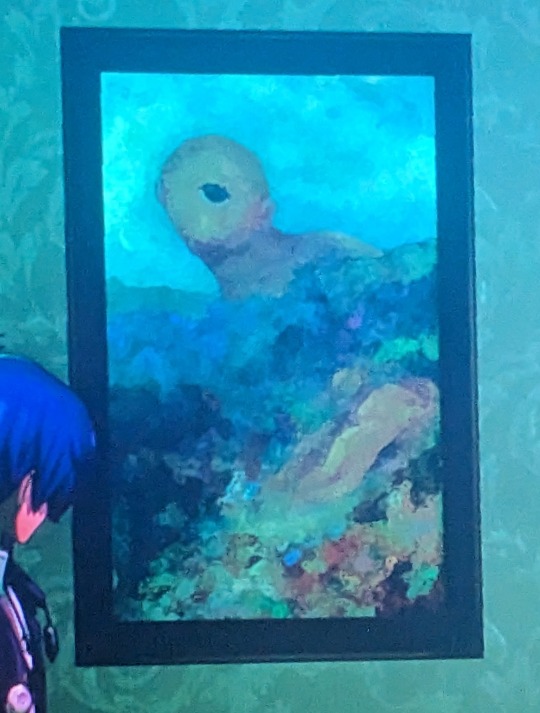
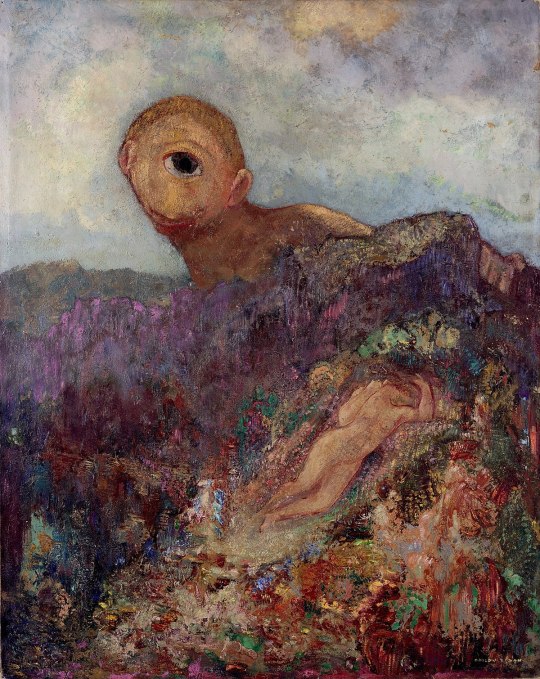
Because I'm the way that I am, I noticed the paintings hung in the Hierophant/Lovers boss shadow building are real paintings. One on the left is a crop of Liberty Leading the People by Eugene Delacroix, and on the right is Le Cyclops by Odilon Redon. IDK why they picked these paintings because. Why would a painting of the French Revolution be in this kind of hotel but I have some theories?
The hotel they're in is pointed out to have a French title and modeled after French design, for some reason. Les Champs de Fleurs is pointed out in the game meaning a field of flowers. Now -
Liberty Leading the People is a painting about the July revolution that overthrew the French monarchy. The boss event is in July but there's more -
Le Cyclops is about the play(s) about Polyphemus (the cyclops from the Odyssey that Odysseus blinds and tricks) and his love of the sea nymph Galatea, and the drama that ensues. There's many versions of the play but in classic fashion most of them don't end well, with Galatea rejecting him in favor of someone else, and Polyphemus killing them both. This painting in particular is basically Polyphemus creeping on Galatea as she sleeps on a hill of flowers.
I THINK these paintings are meant to represent the reverse hierophant and lovers. Overthrowing of the corrupt hierarchy, and rejection of choice. Also French.
There's one more painting but I have NO IDEA what painting it is
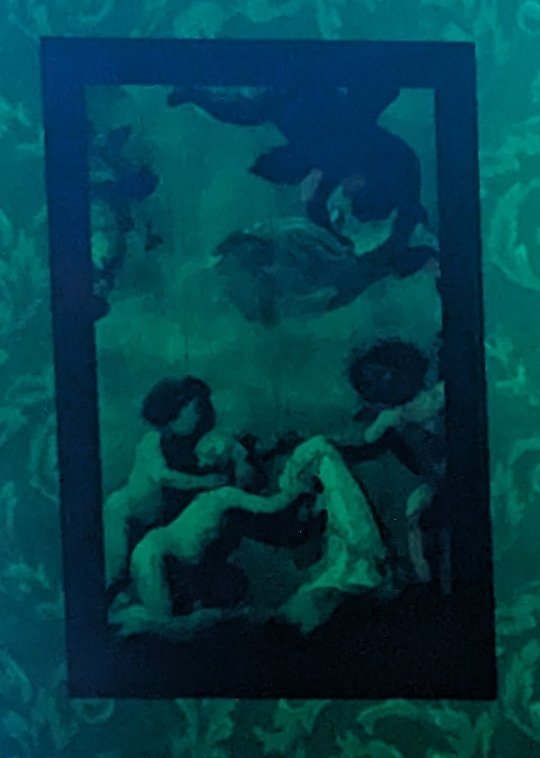
So many paintings have winged babies in them I can't go through them all 😭
Oh yeah linguistics bonus - the boss event takes place on 7/7, aka Tanabata. Some might know it as Japanese Valentine's day. Story goes Orihime and Hikoboshi, lovers separated by duty and the milky way, can meet during this festival as a flock of magpies make them a bridge over the milky way. Milky way, in Japanese is Amanogawa 天の川, literally "river of heaven". An older version is also sometimes used, ginka 銀河, derived from Chinese meaning "silver river". And here is where we get the name of Shirakawa Blvd. 白川...... White River Blvd.
I THINK that's why they named the hotel Champs de Fleurs. The classic Greek mythology of heaven is Elysium, basically a field of flowers in the sky. Kinda as the companion to the river in the sky. Not to mention it's a reference to the famous French street Champs Élysées, literally "Elysian Fields"
Imagine me standing in front of a conspiracy wall covered with red string. That's me all the time with p3
Ok back to shitposting
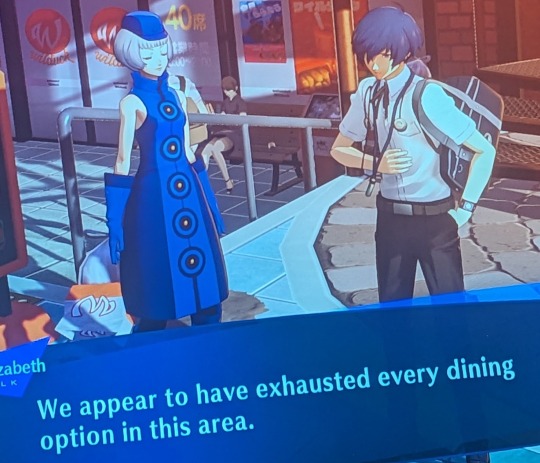
This is the most emotion I've seen the Mc make all game so far 😂 7 meals back to back will do that to ya. Name I picked was Dank Hour, so I guess it kinda fits. Munchies will do that
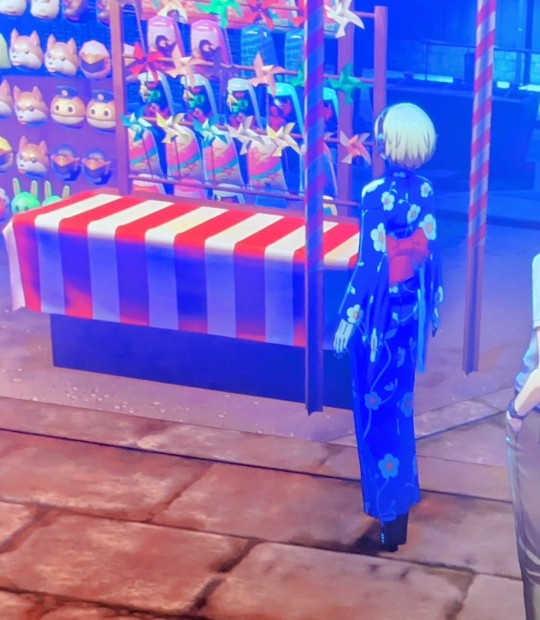
Those are her hooves!!
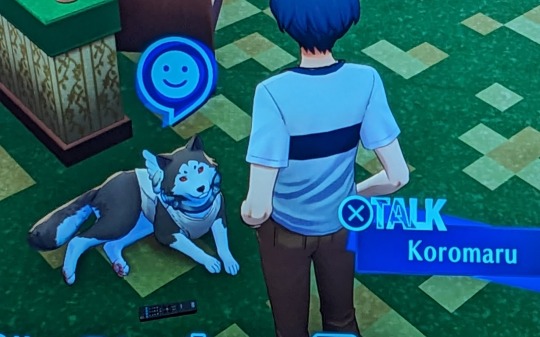
OH MY GOD. HOLY SHIT HANG ON
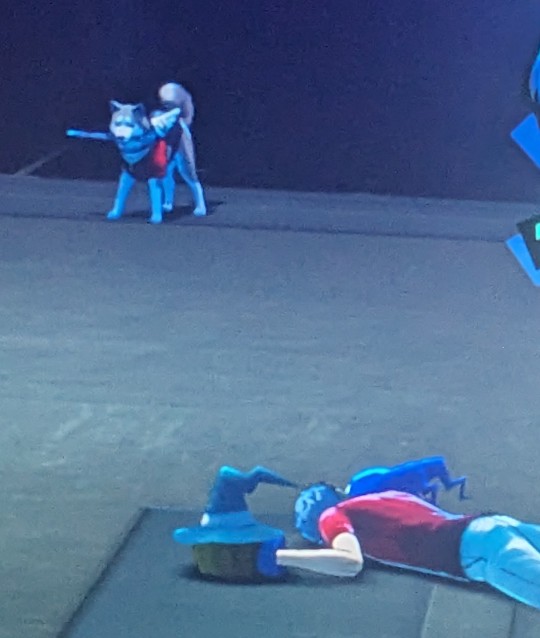
These puppets are massive
Gameplay thoughts -
- I miss the fatigue mechanic ok. Now there's NOTHING stopping me from spending five hours in Tartarus getting massively over leveled. Also miss it thematically and an excuse to go drink Edogawa's potions for courage boosts
- RIP shuffle time. The new one is good with the variety of cards but man make them fly around again that was fun
- Tartarus looks good. I was skeptical of how they're gonna make a randomly generated dungeon look good on current consoles but. It looks really good and plays well. And I love the added bonus bosses.
- I do miss being able to actually stealth around with different weapons and hunting rare shadows with a bow though. The unstable formations in p3p around half and new moons were also something I wish they incorporated, but maybe it'll come up later? Because the new Tartarus environment would be perfect for some stealth mechanics.
- I don't know if this is because I'm p3 Georg and an outlier that should not be counted but I'm playing on merciless and it's SO EASY???? I'm almost to August and I've ONLY died three times. I'm playing with a 3 people party as a debuff because it's too easy otherwise.
- ailments kinda work different than they used to and I still haven't figured out... What they really do yet. Distress used to guarantee criticals, now I'm not sure what it does???
- the theurgies are broken as hell wtf. This is too much power. I was really hoping they'd bring P2/dds style fusion spells back
General thoughts:
- they still haven't invented weather yet lmao rain was invented in 2011 I see
- Pleasantly surprised by the added cutscenes and hangout events in the dorm. They're actually pretty thoughtful and reflects on the character growth throughout the game instead of just ill humored filler (cough p4 cough). They really nailed it this time.
- Aigis trying to talk to plants and bugs and the meaning of lifeeeee 😭
- the club is simultaneous hilarious and terrifying in the way that they didn't animate the dancers. I get why, but it's so funny. It's just a room of statues with blank faces. At least there's more than five people there
- there's two poster of the Foo Fighters in the station outskirts. Why them specifically? Also if the movies at the theatre have hidden meanings I WILL find them.
- Mitsuru just stands like she's posing for the camera all the time and her idle AND angry animation being a hair flip is so funny. Hello. Flips hair. Come to the command room after dinner we have new mission. Flips hair. I'm going to execute Mr Ekoda for his despicable inaction. Flips hair
- Idk where else to put this but that scene on the roof with the watermelon hits different when you know a watermelon that size in Japan is, depending on the season and economy, at least $50. Junpei really splurged there to cheer up Ken 🥺. That entire scene was great. Why DON'T we watch Akihiko punch the melon open, what an inspired suggestion
- speaking of fruit, if you look at the care package Akihiko got from his parents there are mangoes in there. Mangoes that size and color are like $30 each.
- the dorm. Could be modeled better. Idk if it's the lighting or the textures but... It looks unfinished.
- they kept the little overworld icon that travels between locations to not go over the bridge even though it'd be a shorter route. Nice. There is an instance where it does use the bridge, when you first go to the police station and Junpei is following you around. Also very nice touch. Whichever dev is responsible for this detail I see and appreciate your work 🫡
- was not expecting even the NPCs to be fully voice acted. They're all so charming!
- at the beginning of the game it tells you to put your things away in the closet. Highlighted. But we can't open or interact with the closet in any way??? Why was closet highlighted??? Did the game do that just to call us gay??
- and also where's my silly outfit???? Everyone has gotten butler and maid outfits except the mc. Where's my goofy outfit I want one too.... Where's the clown outfit from the dancing game.... Where's the maid outfit.... Once my pc arrives I'll absolutely be installing the emo mod. Let my besties reveal their true 2009 forms
32 notes
·
View notes
Text
Woxsen School of Arts and Design offers a dynamic B.Des program in fashion design, blending creativity and practicality. Students delve into a comprehensive syllabus encompassing trend analysis, textile exploration, garment construction, and branding strategies. With a focus on industry relevance, the curriculum fosters critical thinking and innovation. Woxsen's state-of-the-art facilities and experienced faculty provide an immersive learning environment, empowering students to hone their skills and pursue their passion for fashion design. Through hands-on projects and industry collaborations, graduates emerge equipped to thrive in the competitive fashion landscape.
0 notes